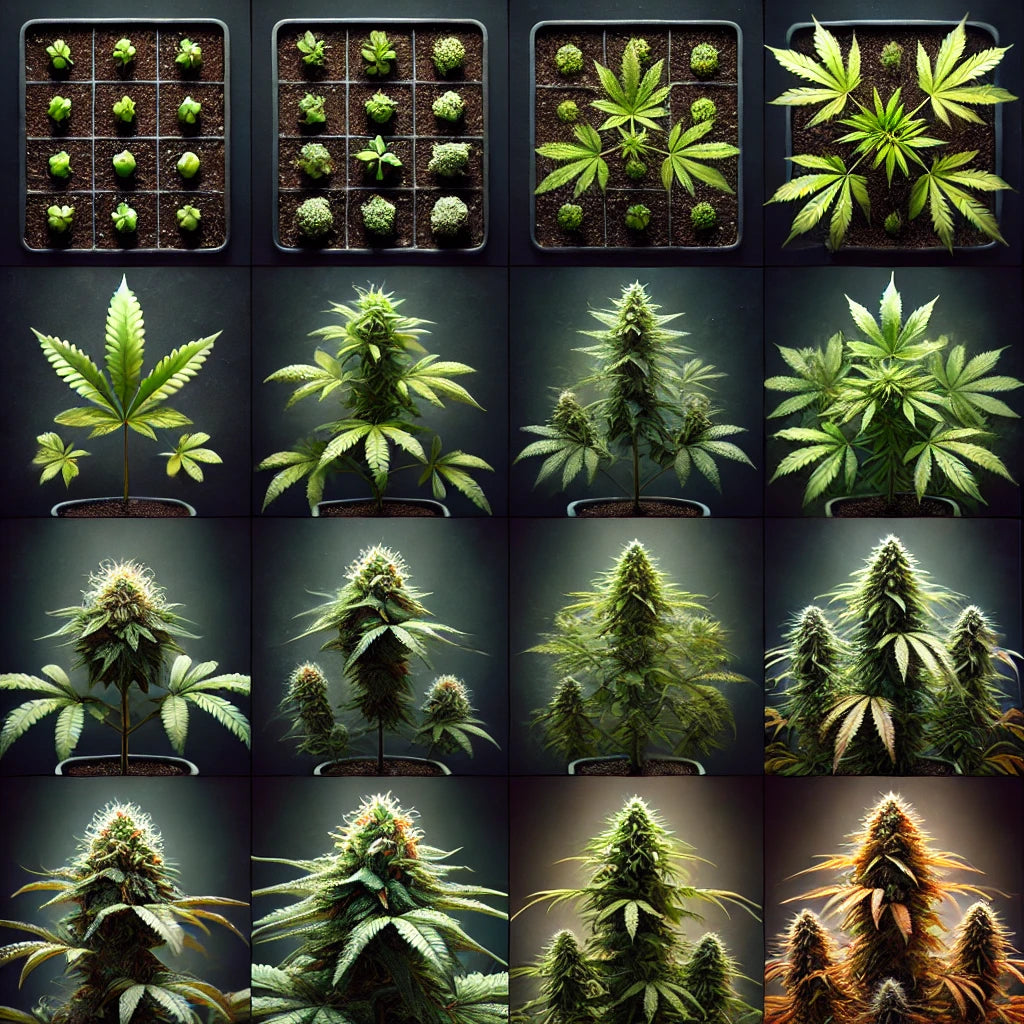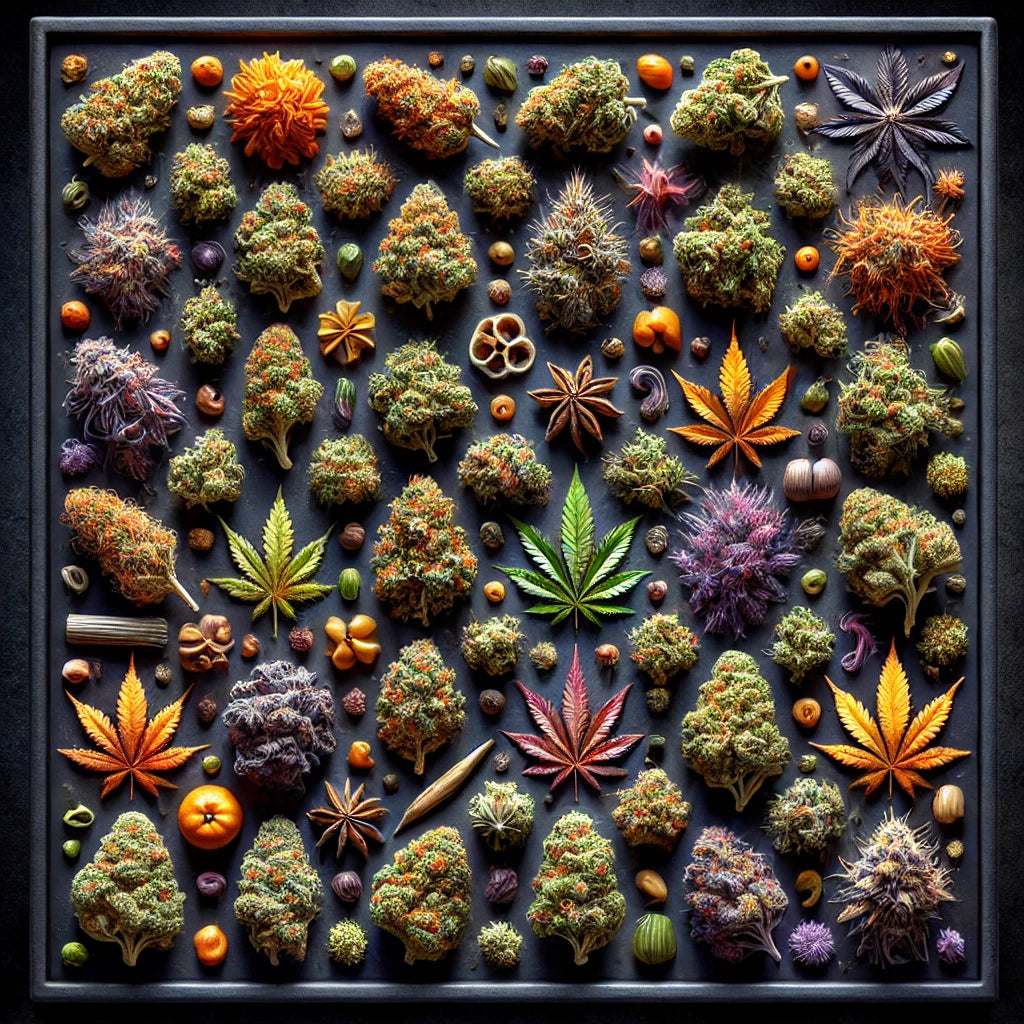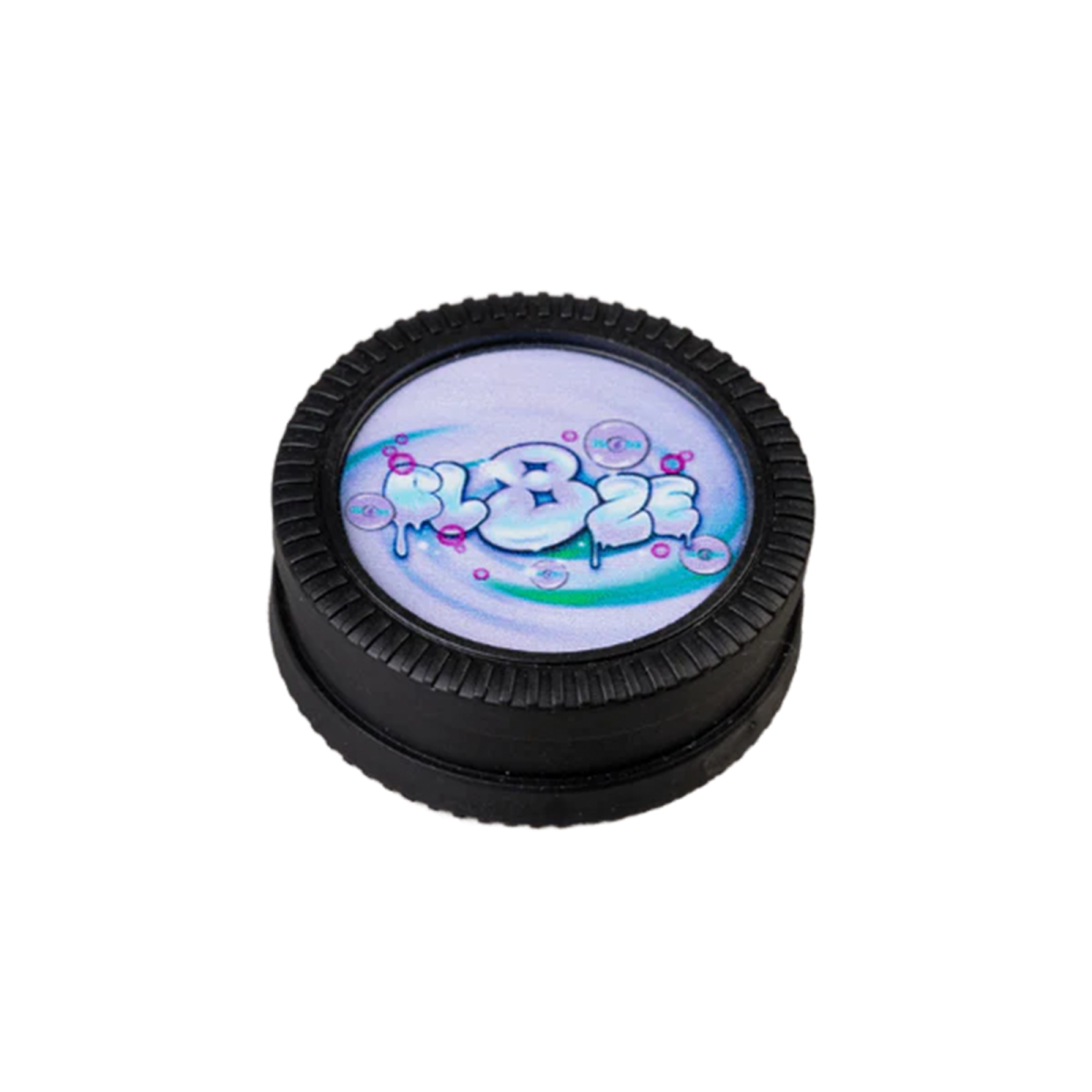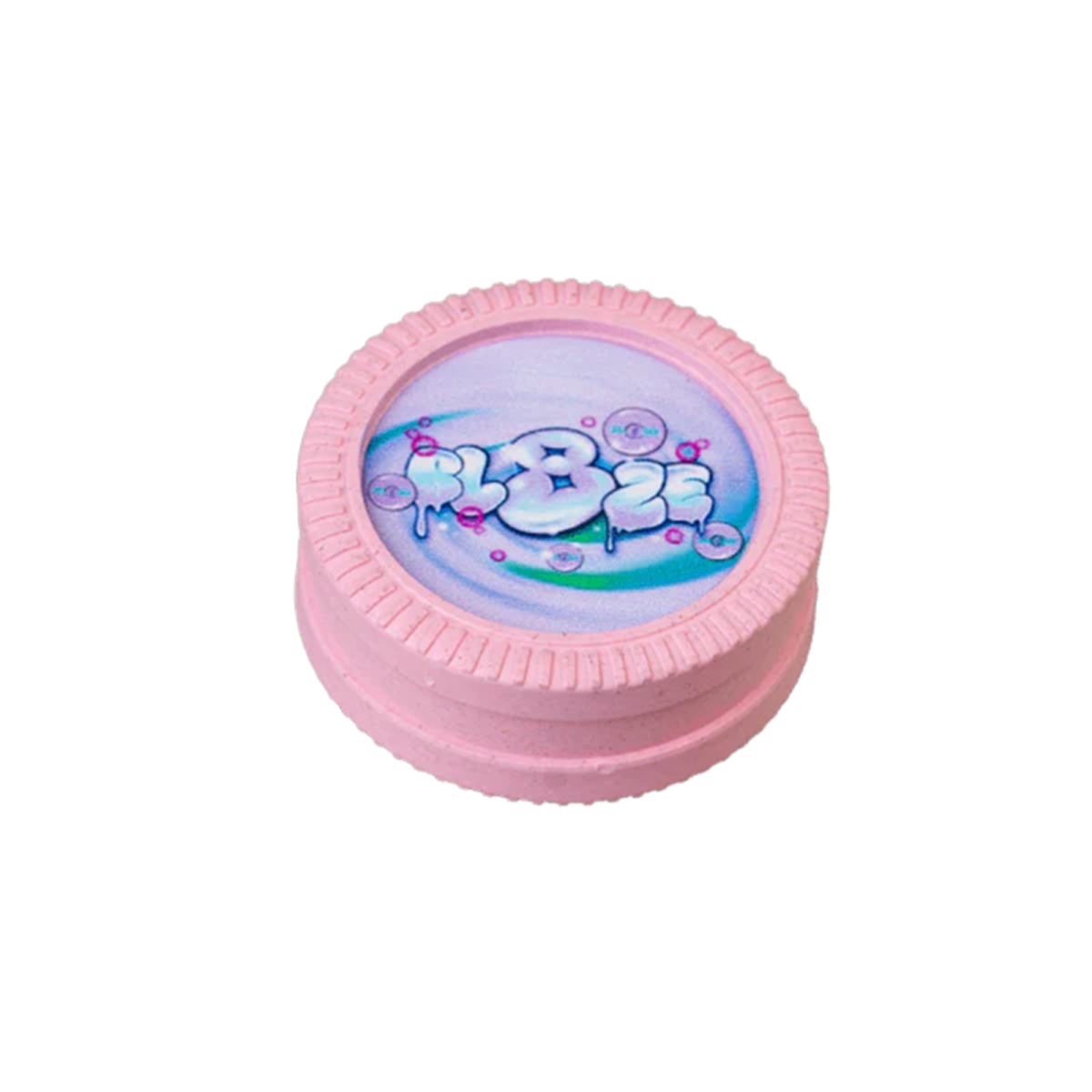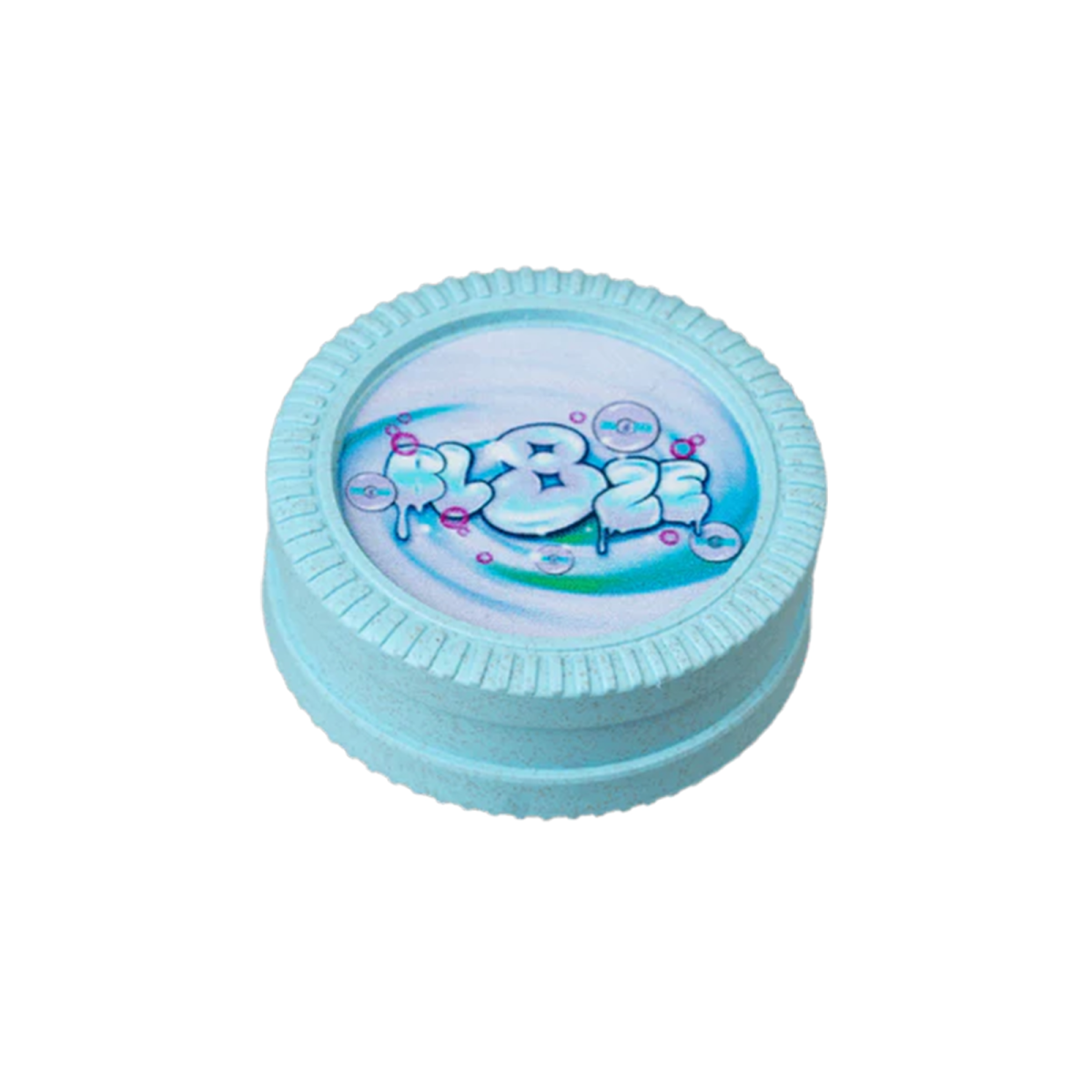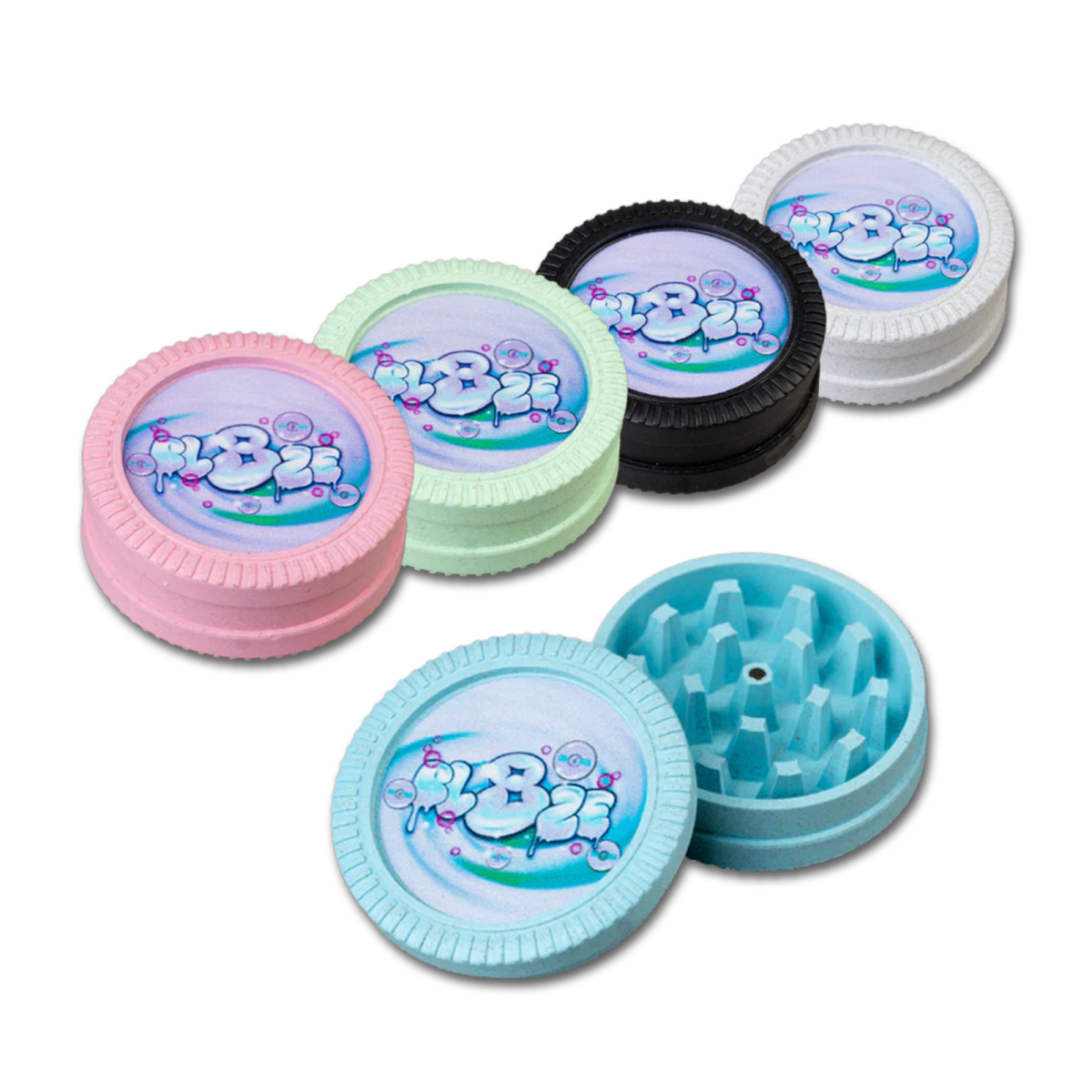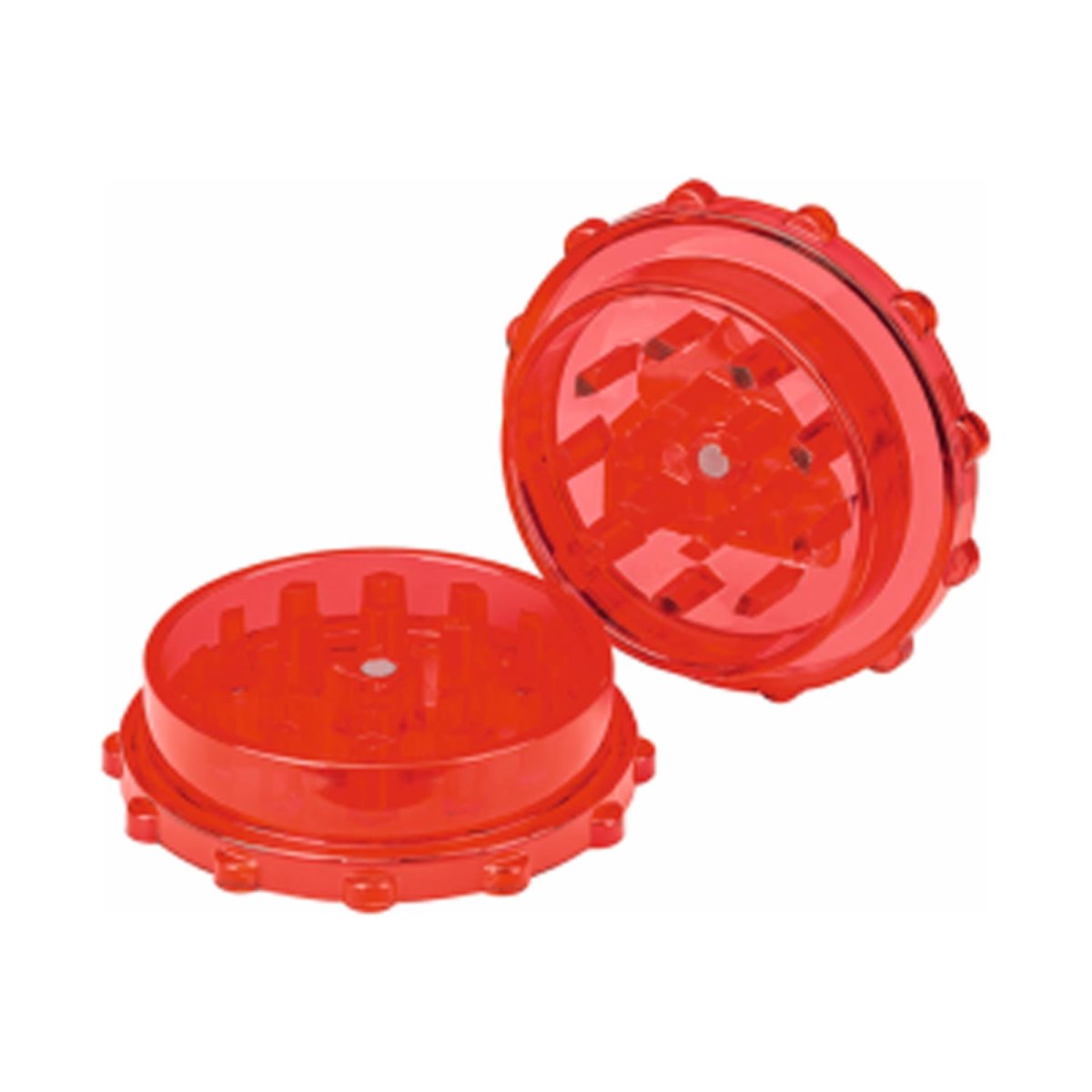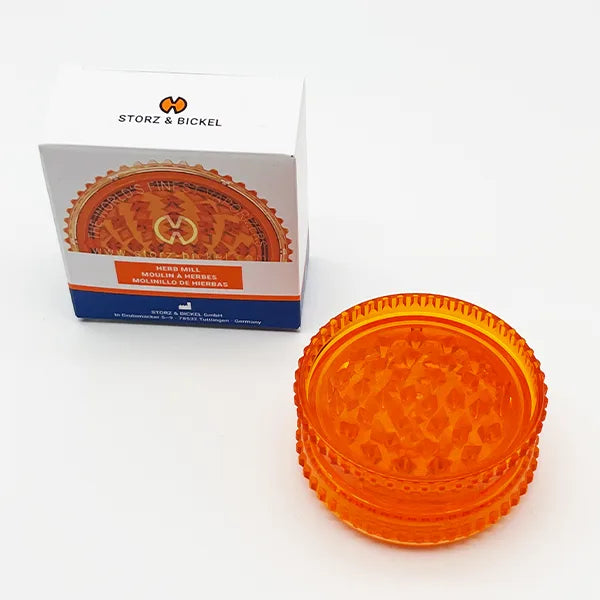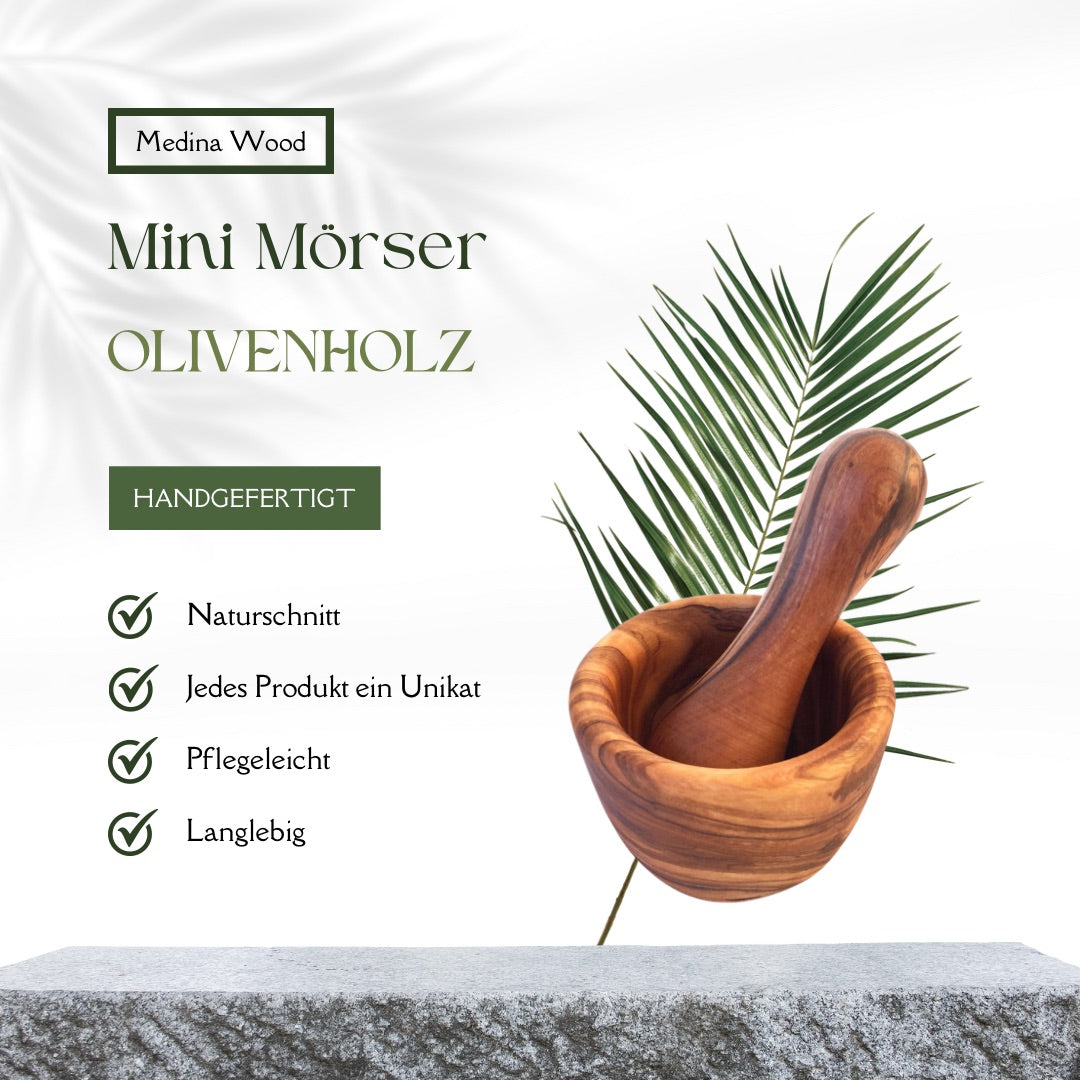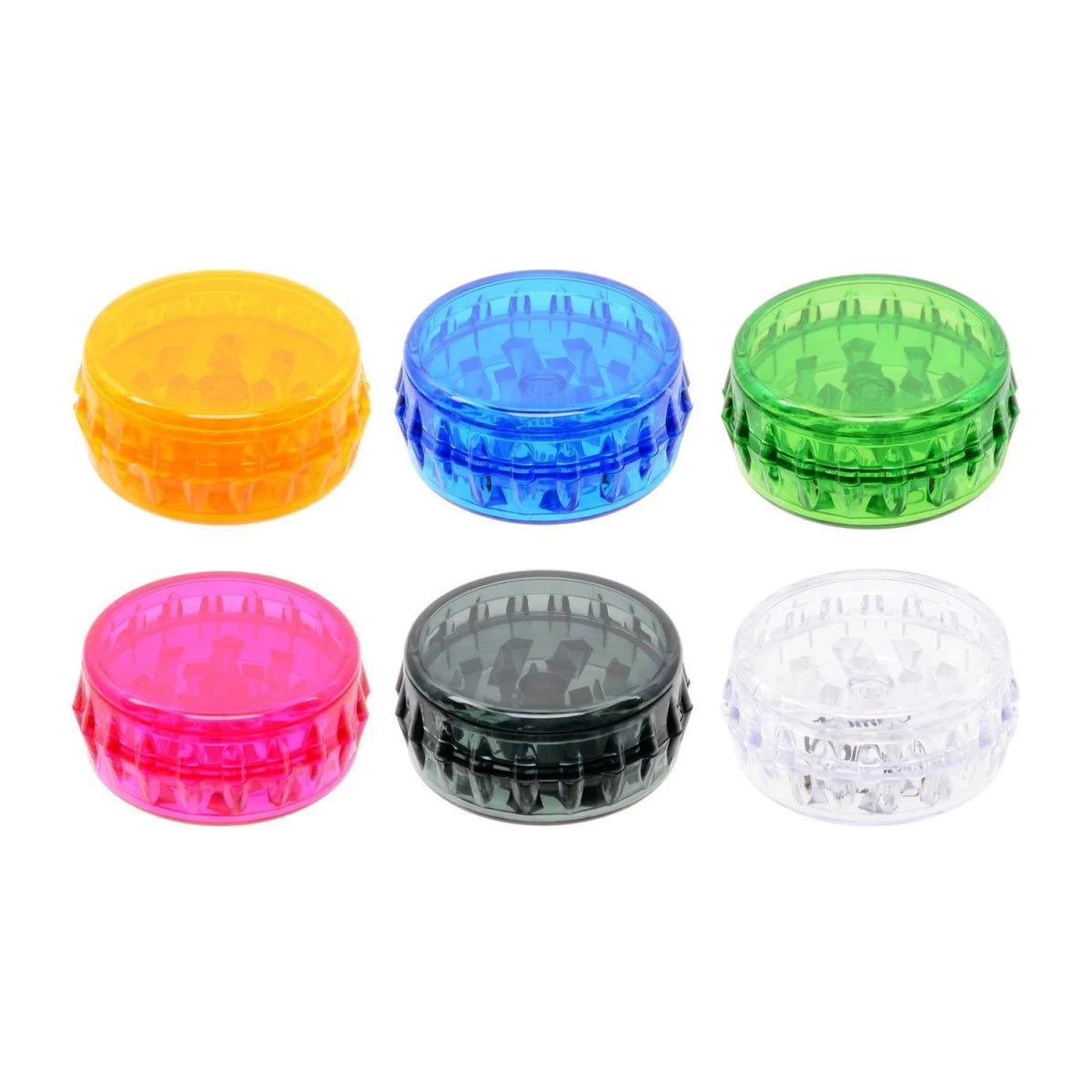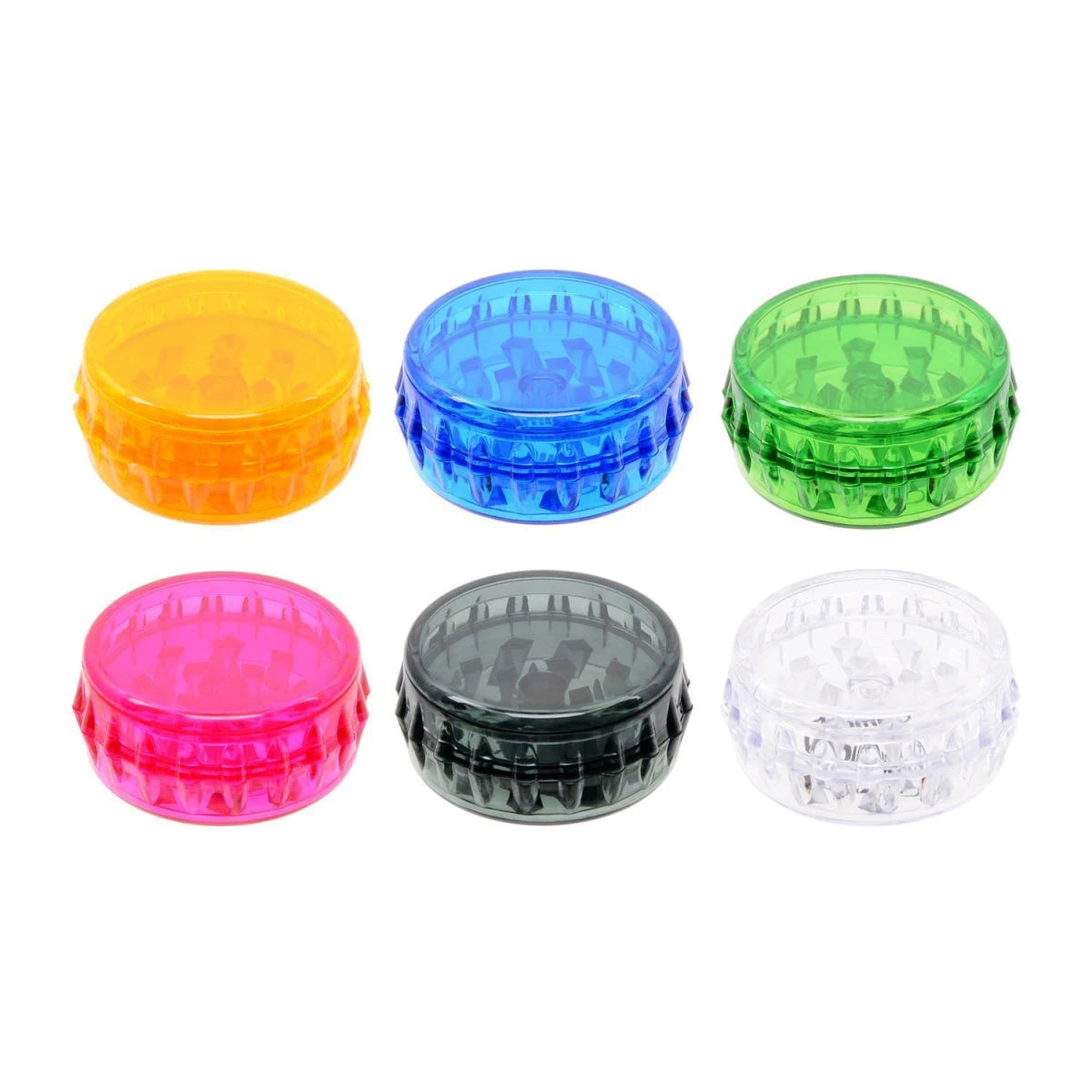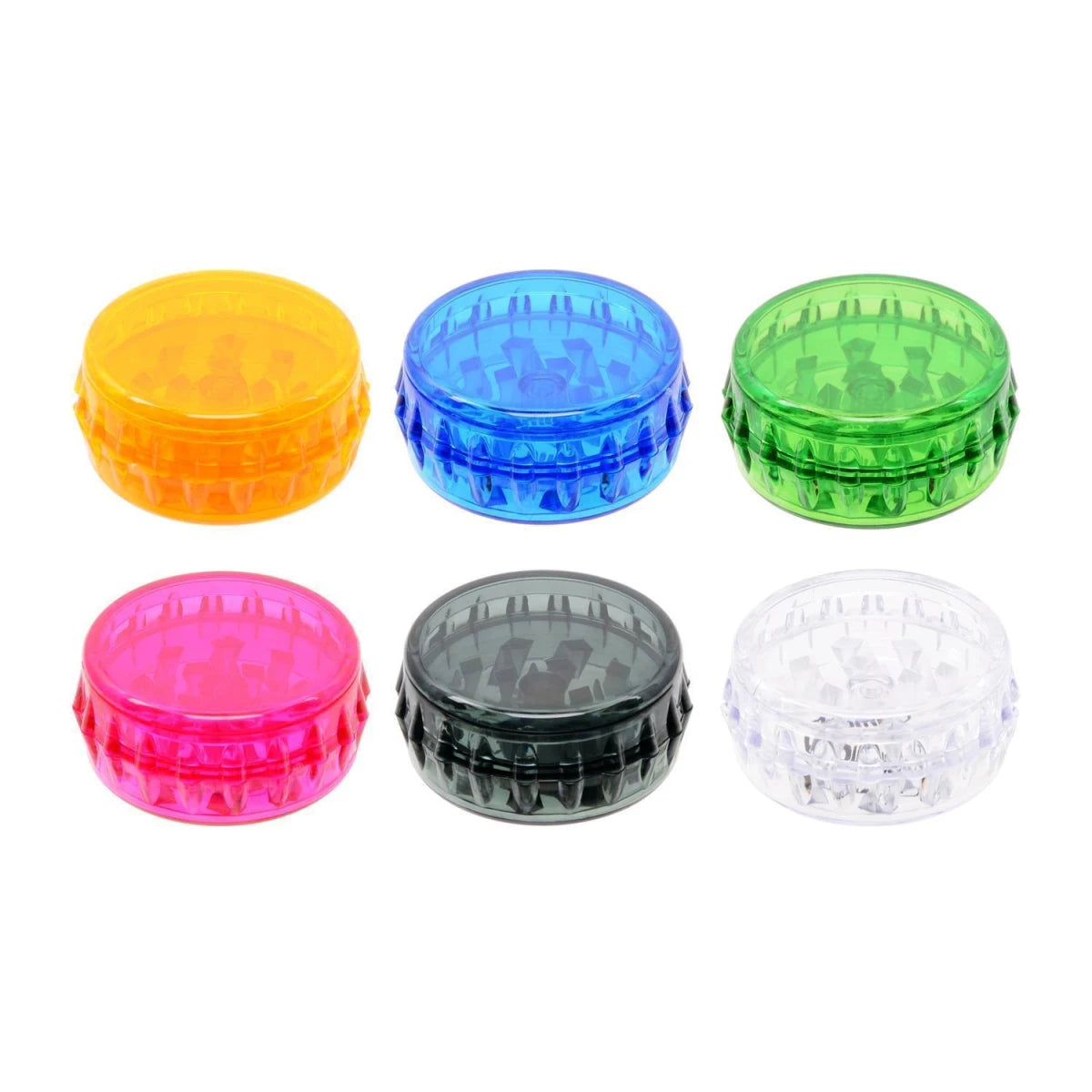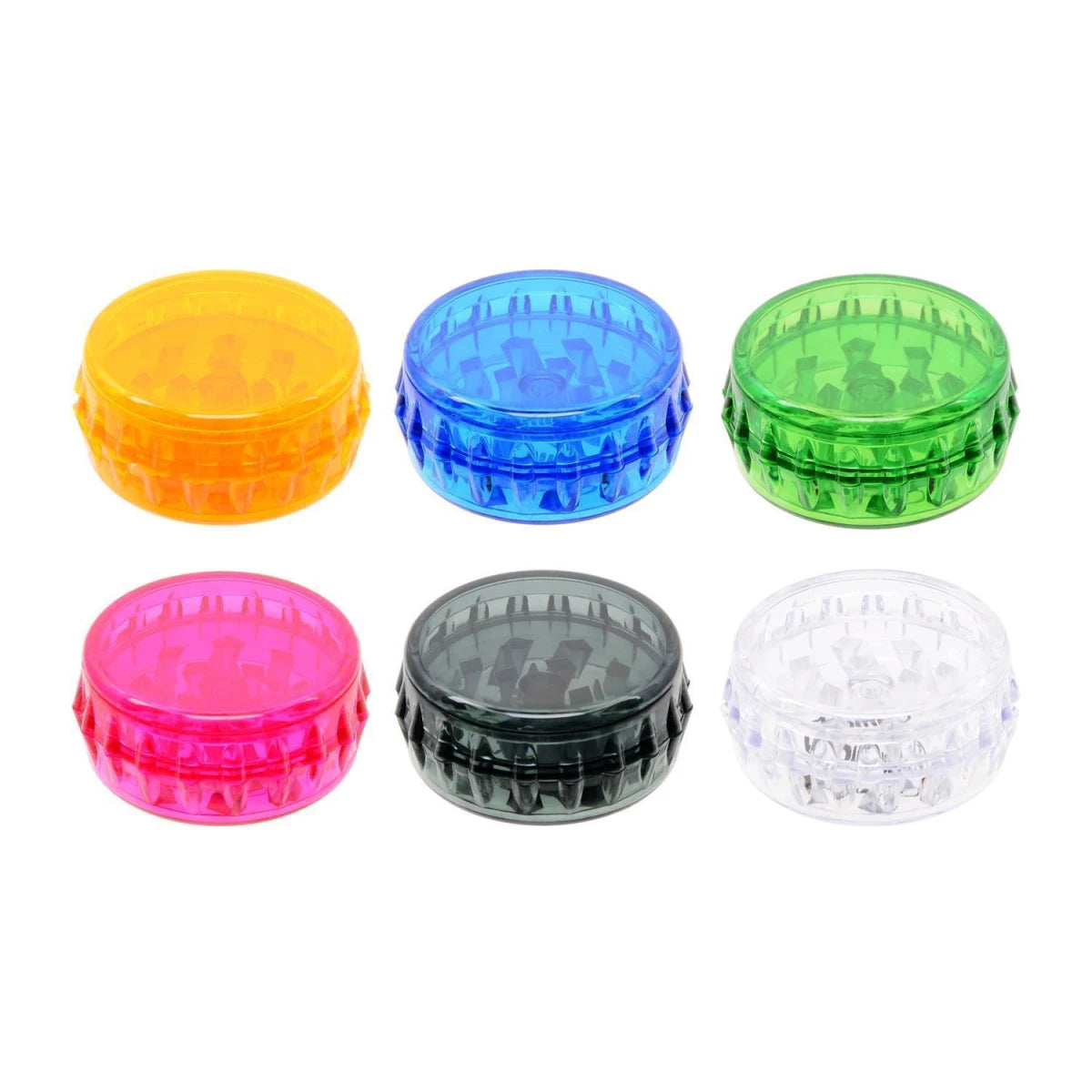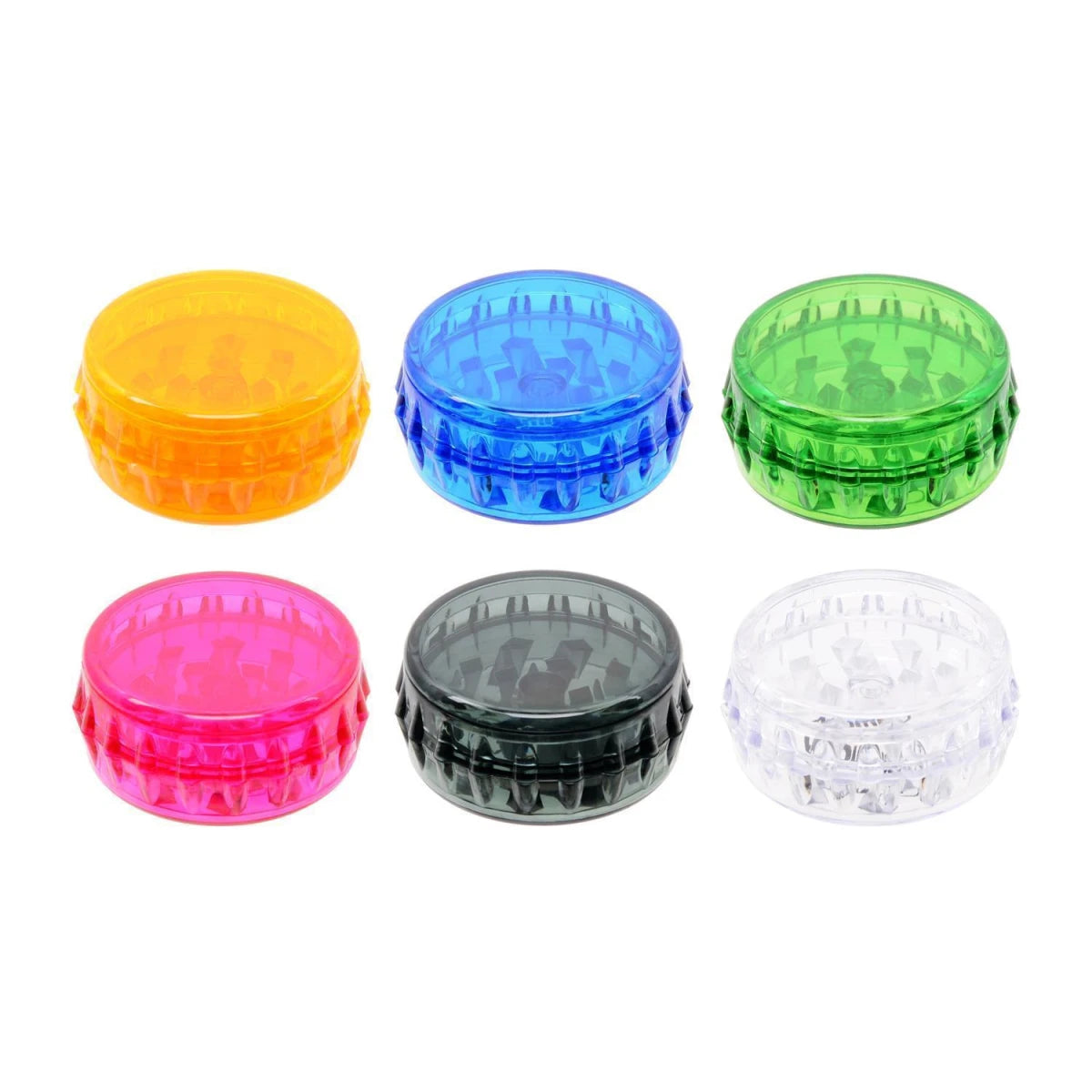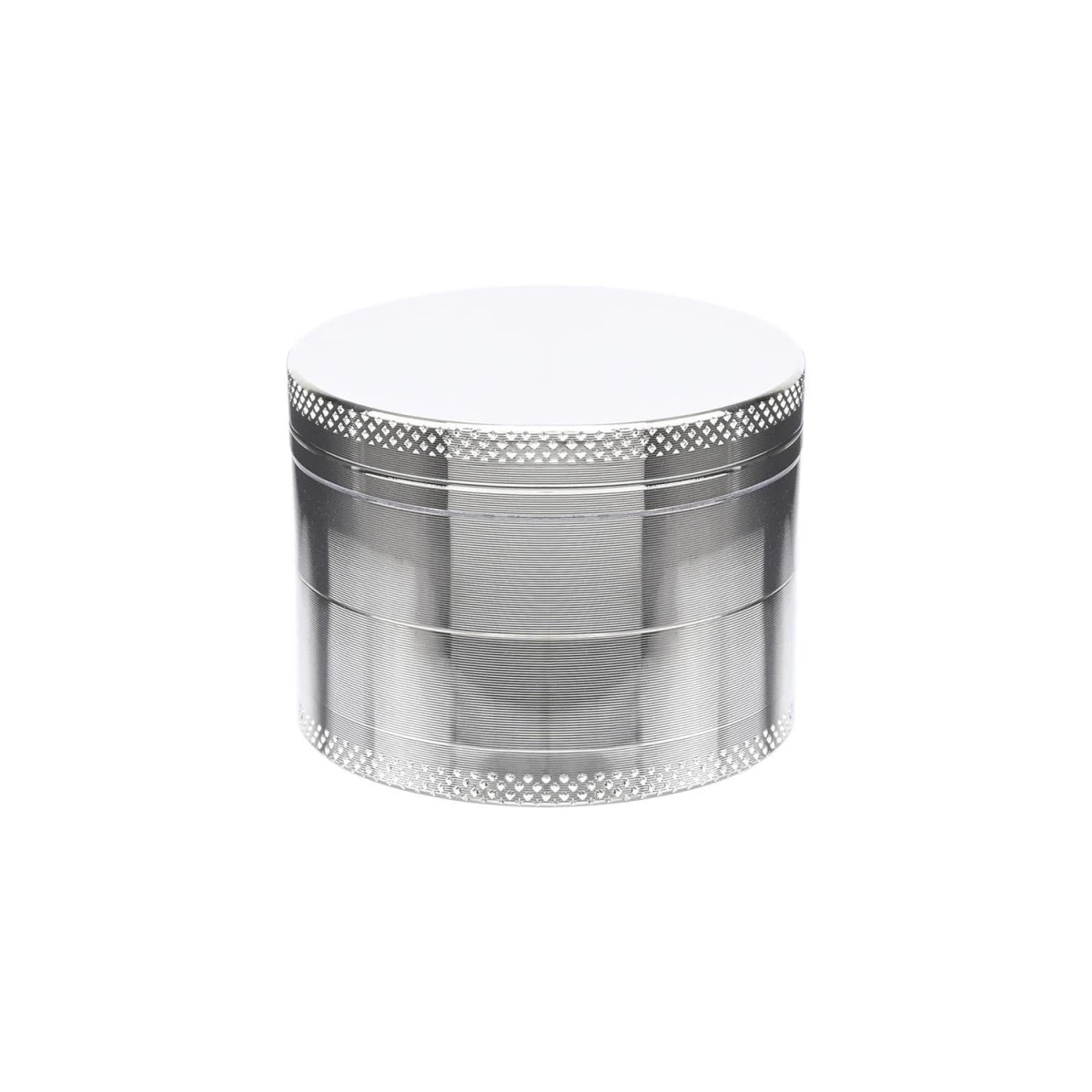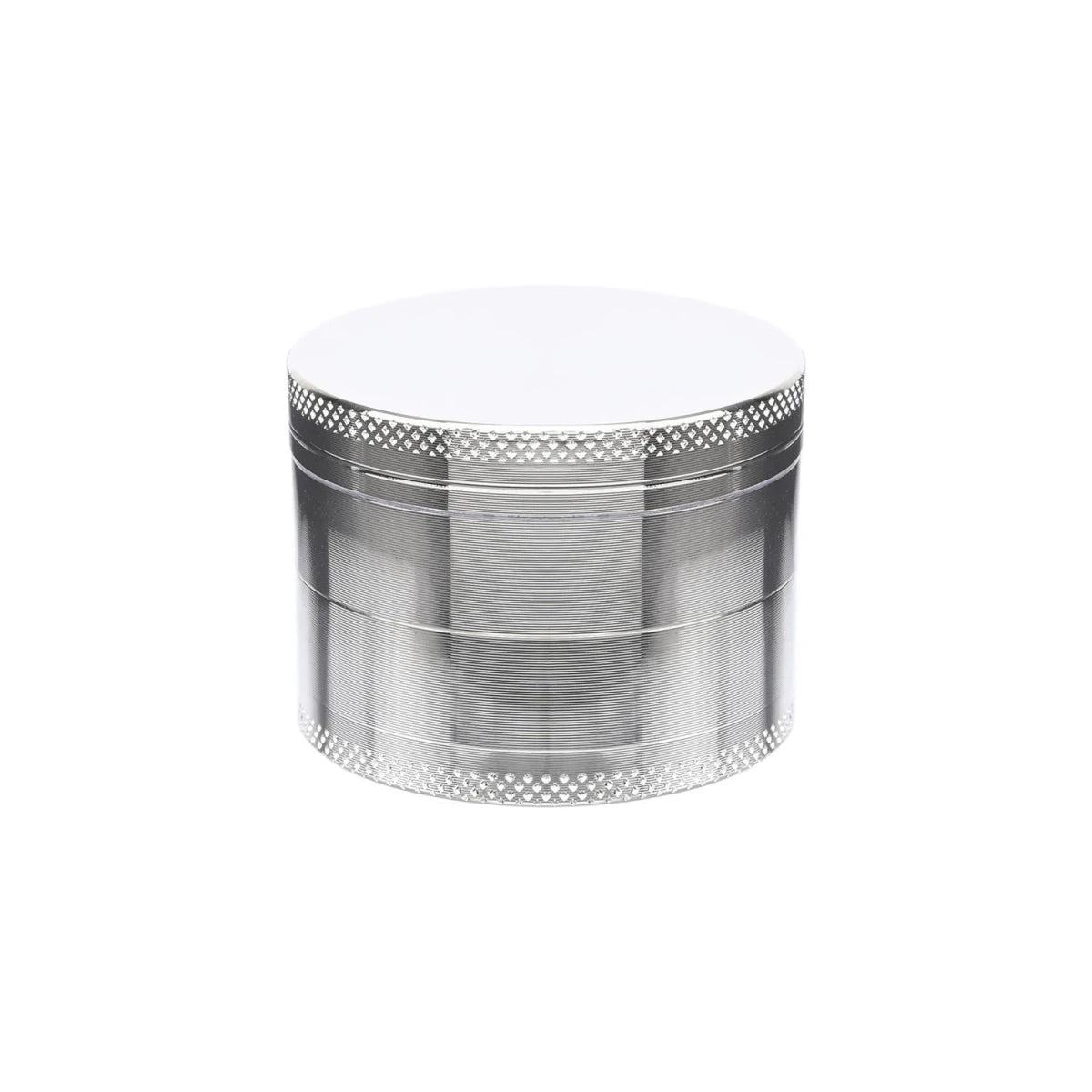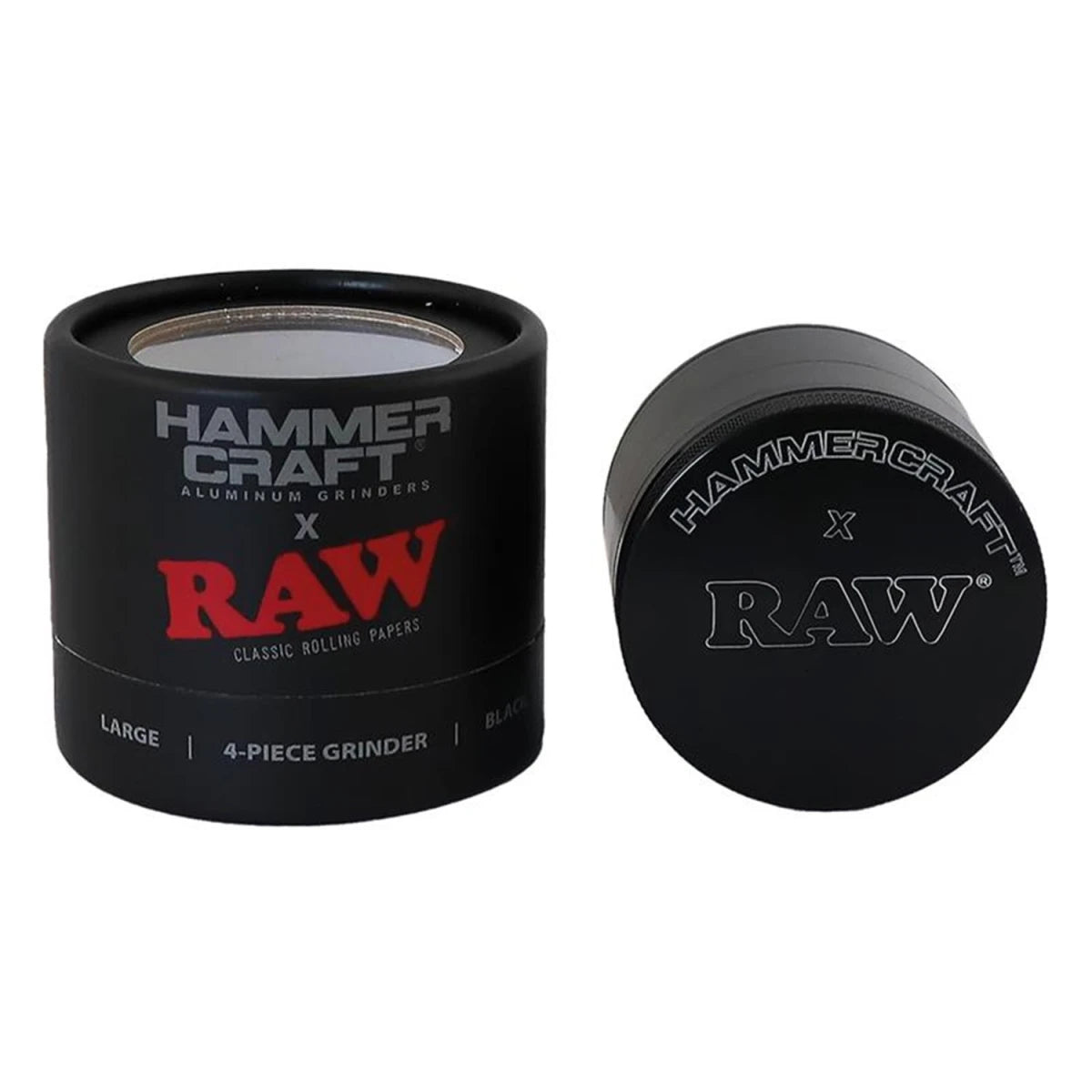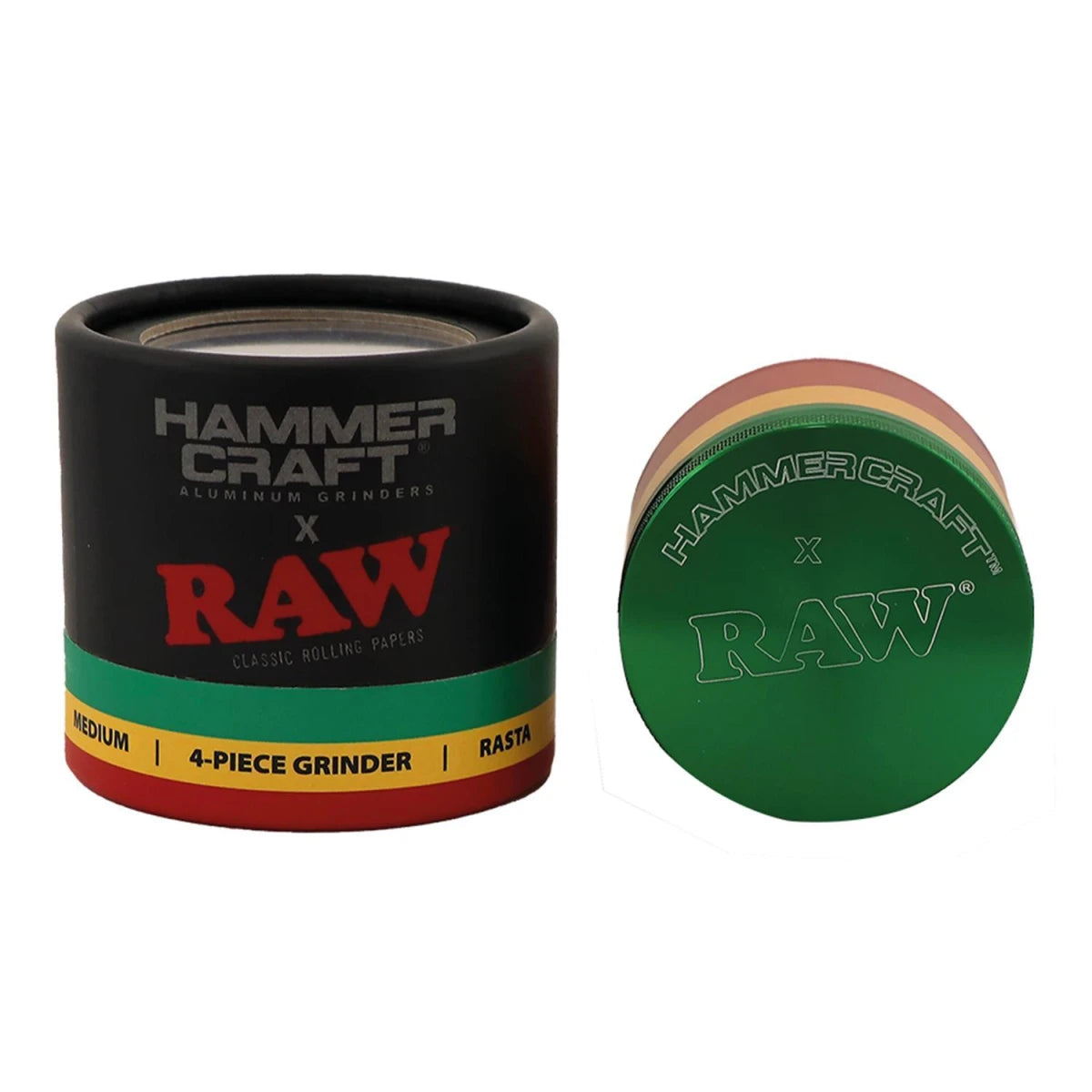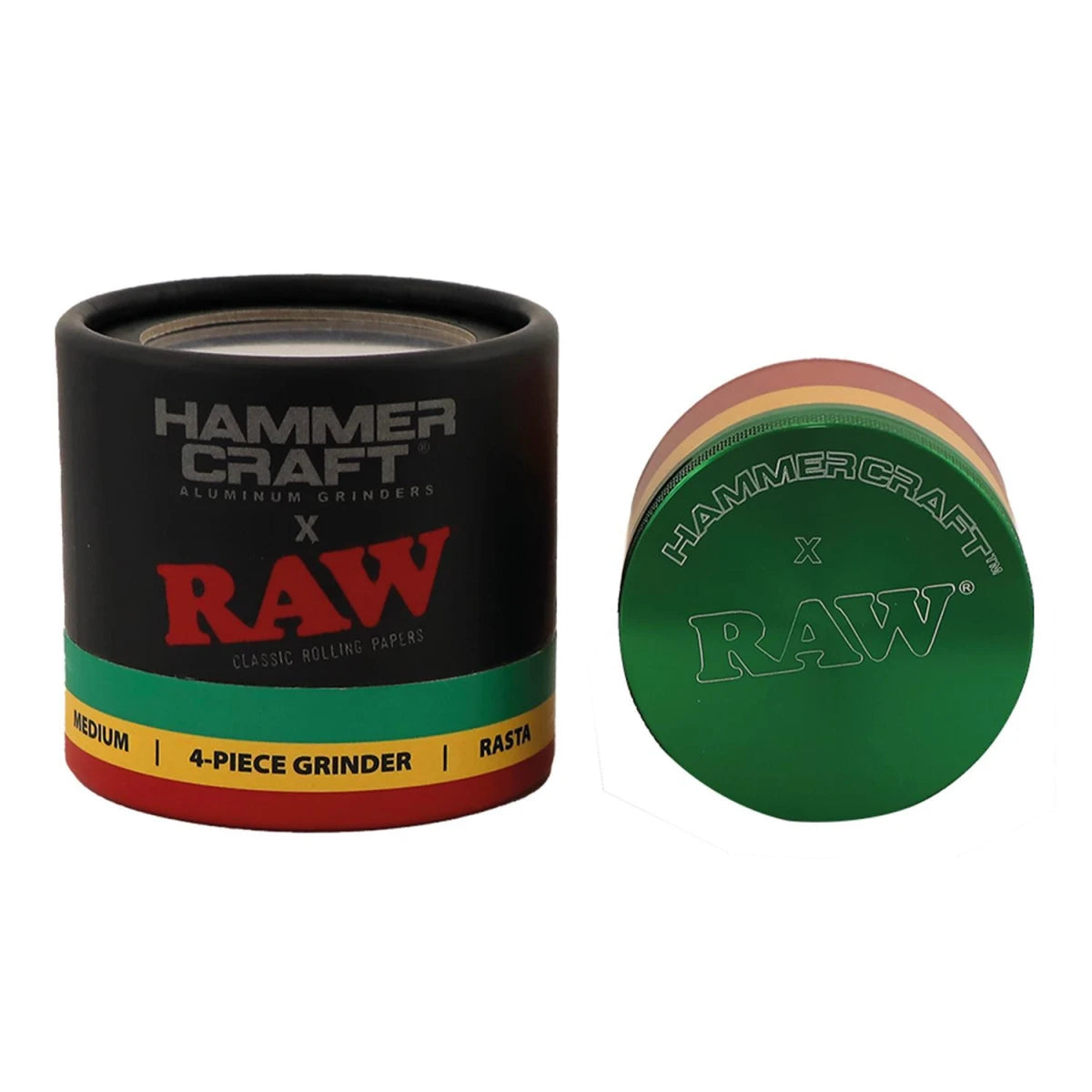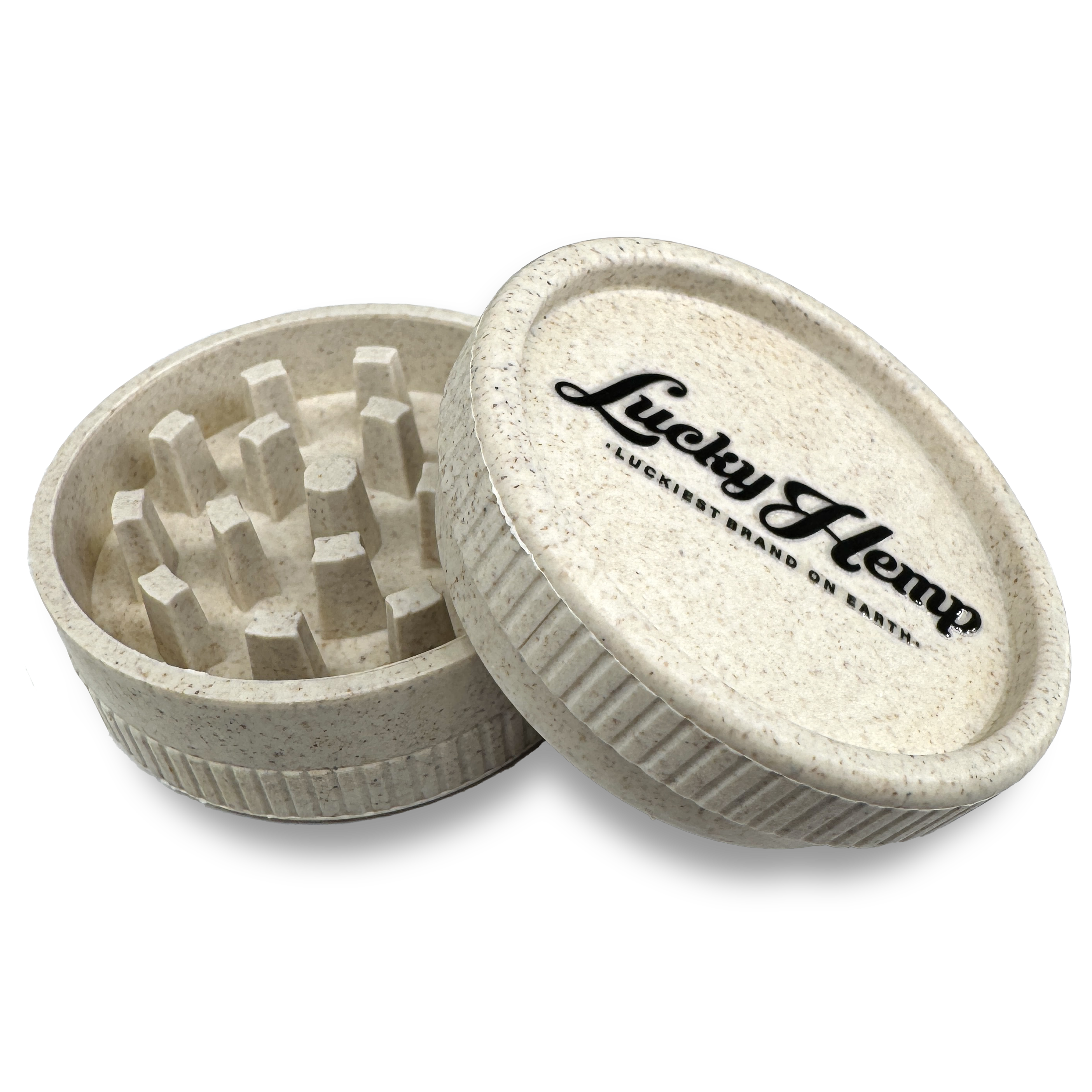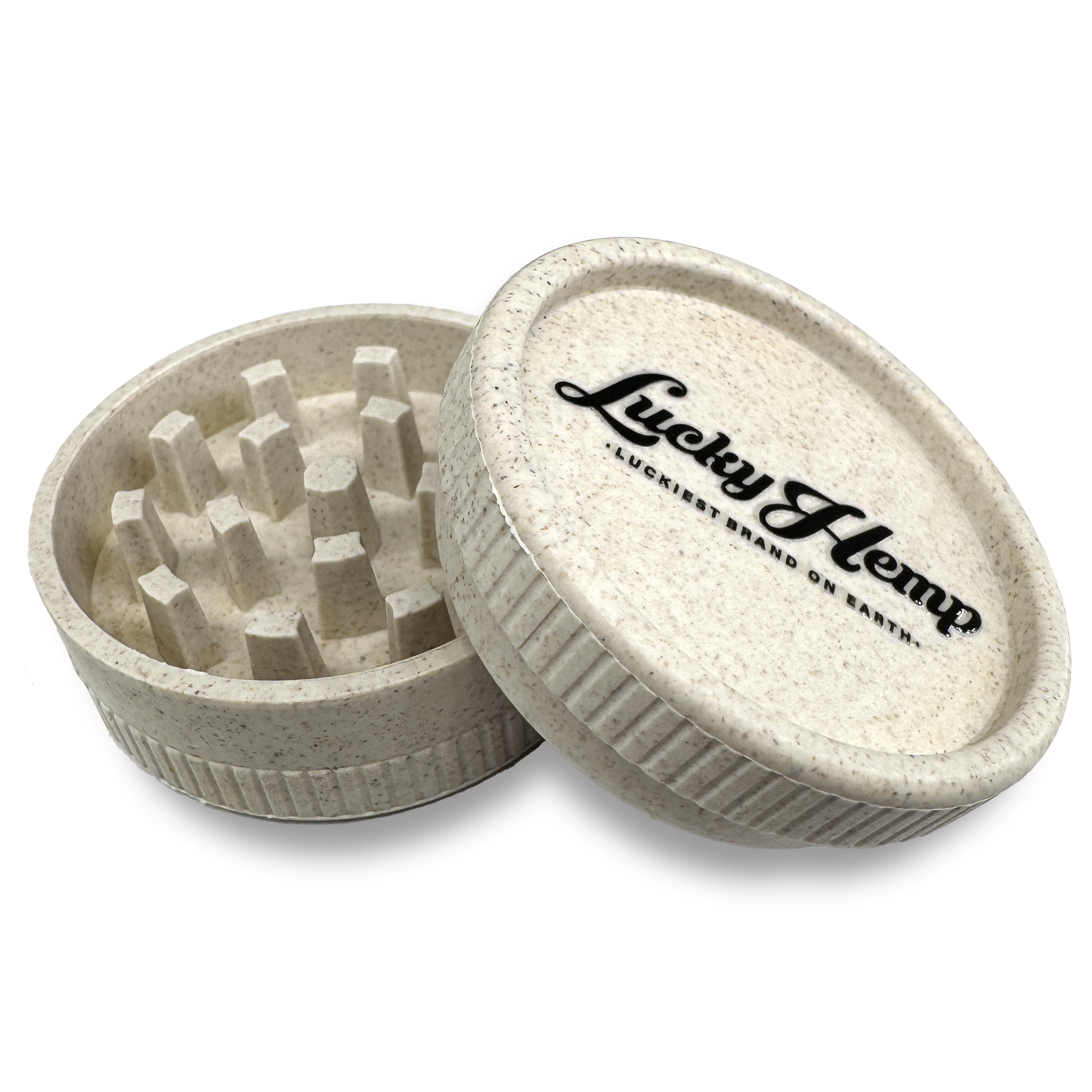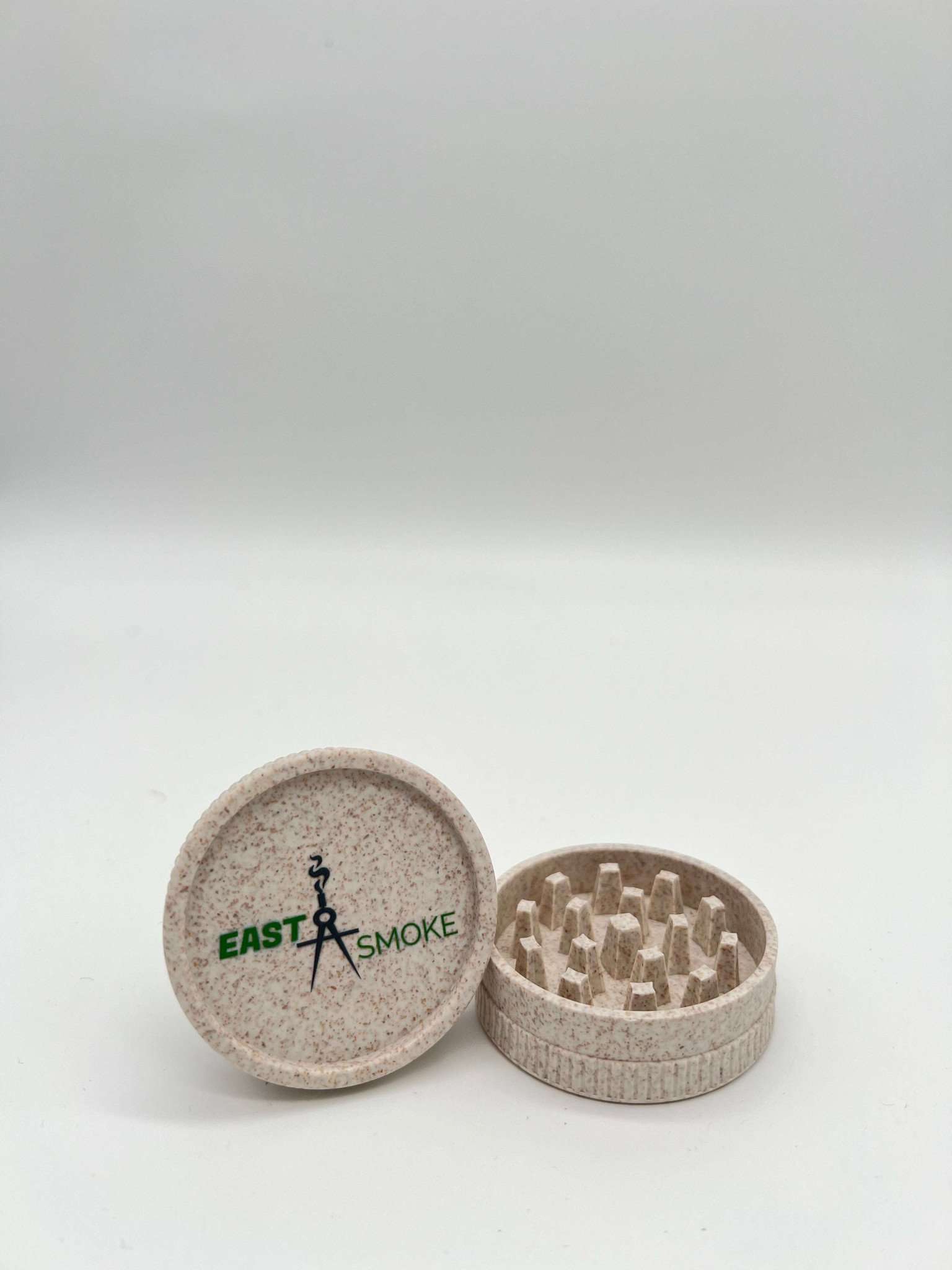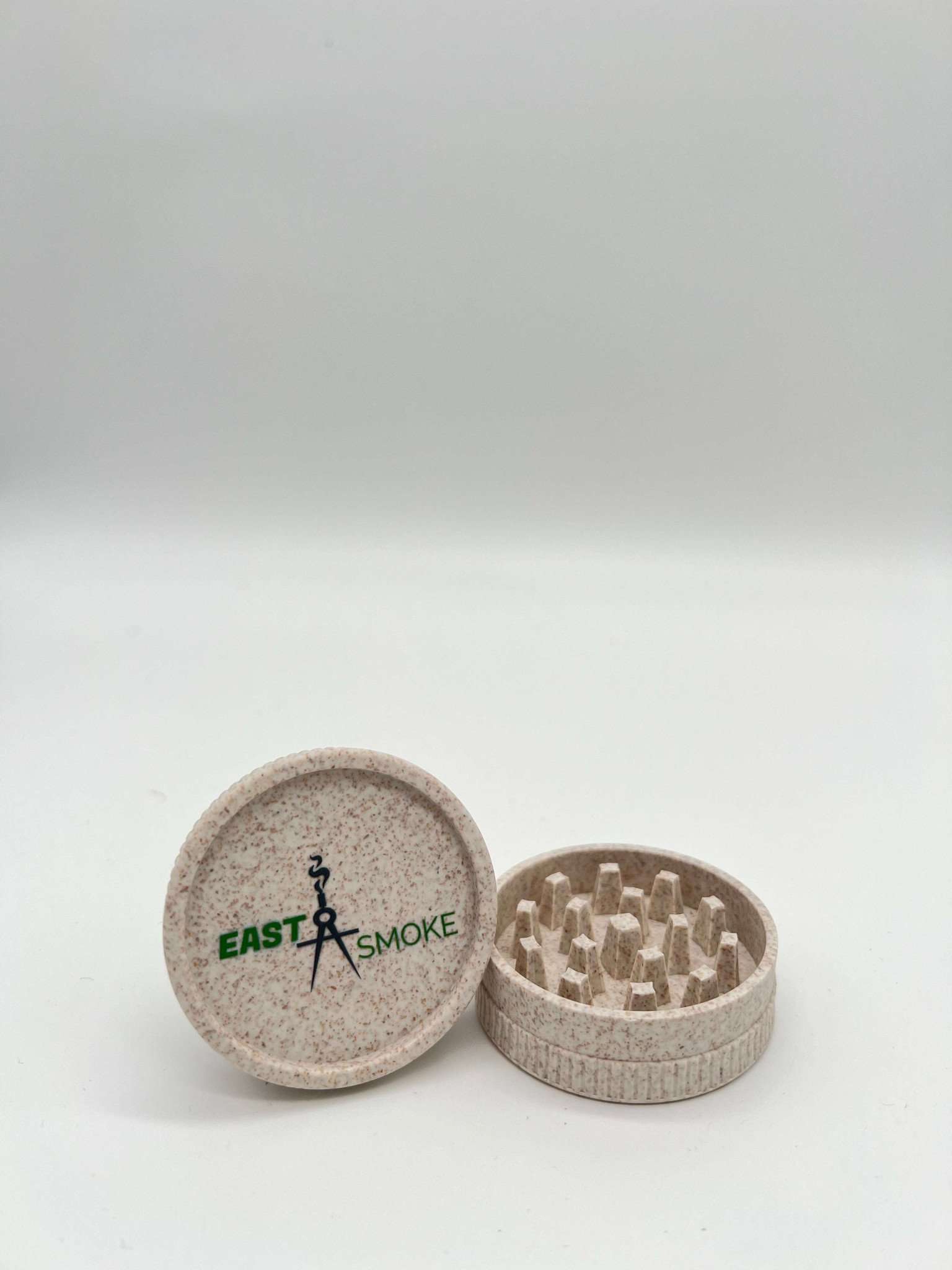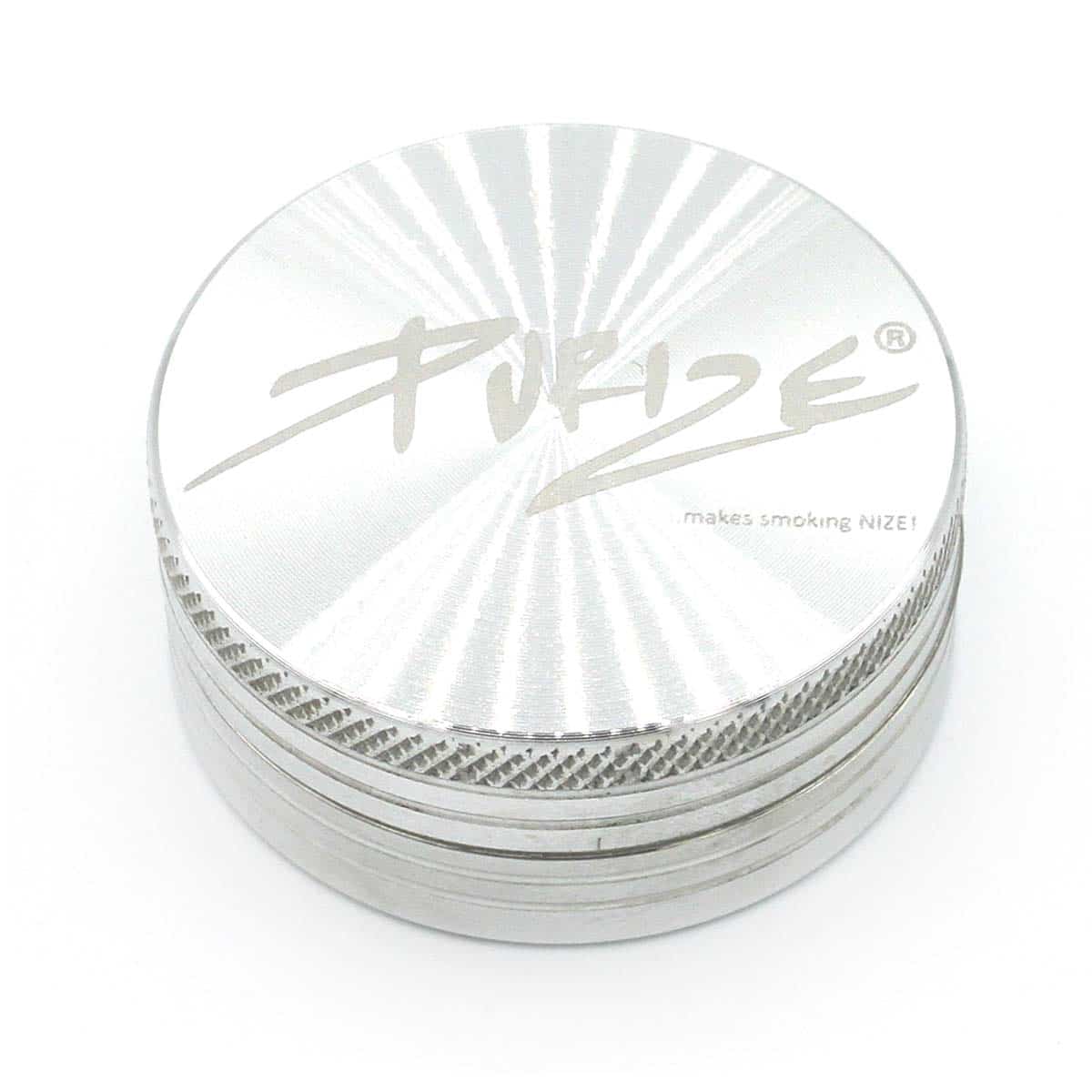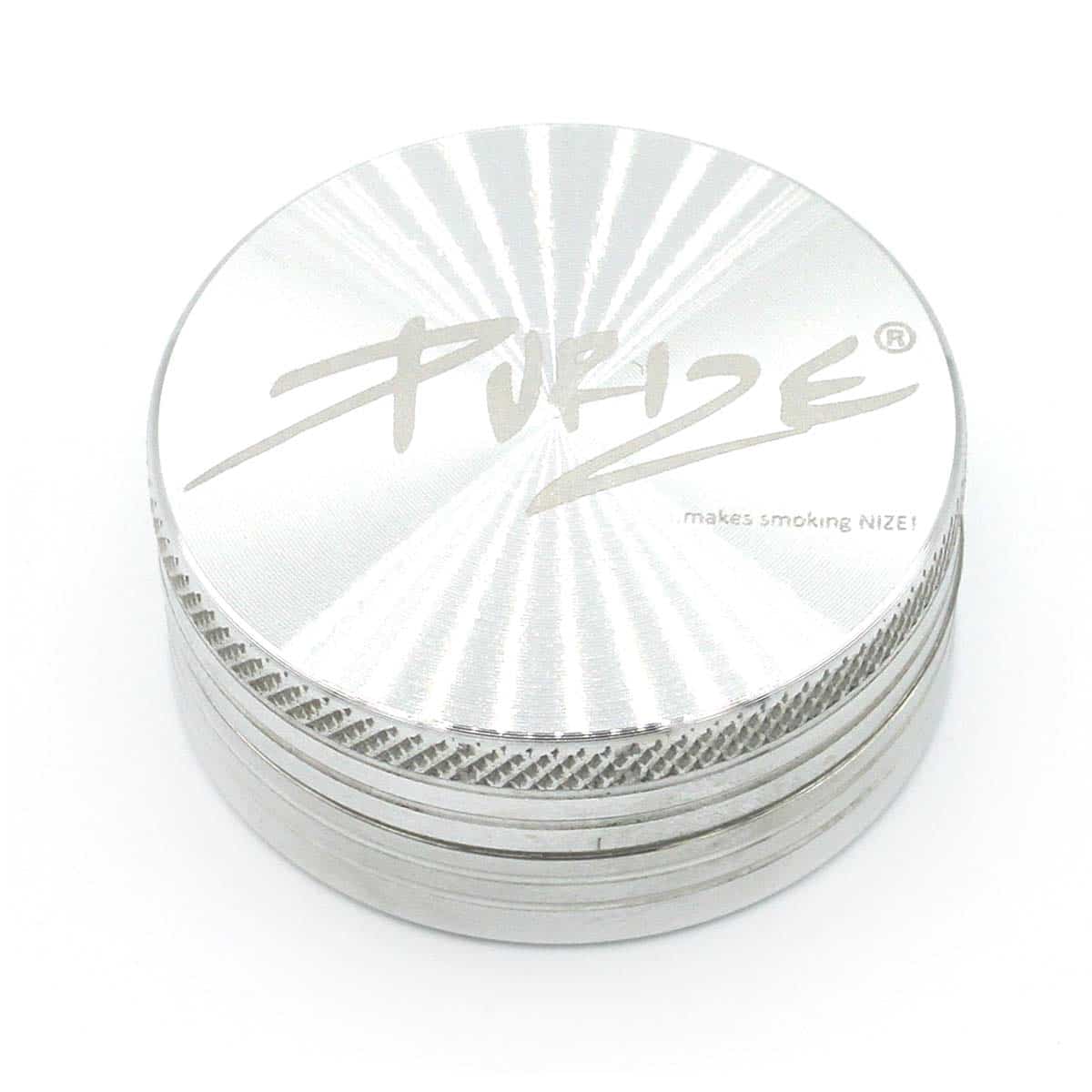
Buy Grinder
Filters
26 products
What is a grinder?
A grinder, also known as a mill, crusher or crumbler, is an essential tool for cannabis enthusiasts. This clever invention revolutionizes the way you prepare your herb and offers you a multitude of benefits.
Imagine you want to roll the perfect joint or get the most out of your vaporizer. This is where the grinder comes in: It grinds your buds evenly and efficiently so you can get the most out of your material.
But a grinder is more than just a simple tool. It is your faithful companion on your cannabis journey, helping you refine and optimize your experience. Whether you are a newbie or a seasoned connoisseur, a high-quality grinder can take your experience to the next level.
In this comprehensive guide, we delve deep into the world of grinders. You'll learn all about the different types, materials and functions. We'll show you what to look for when buying, how to use and care for your grinder properly, and why this small device can make such a big difference.
Are you ready to expand your knowledge and optimize your cannabis experience? Then let's explore the fascinating world of grinders together!
The different types of grinders
The world of grinders is diverse and offers the right solution for every taste and every application. Let's take a closer look at the most important types:
Manual Grinders
Manual grinders are the classic among shredders and are very popular. They usually consist of two or more parts that you turn against each other by hand to shred your material.
Advantages of manual grinders:
- Full control over the degree of shredding
- No power connection required - perfect for on the go
- Often with kief chamber for the collection of fine trichomes
- Durable with good care
Disadvantages:
- Requires some strength and skill
- Can be time consuming for large quantities
Electric Grinders
For those who like it particularly convenient or need to process larger quantities, electric grinders are an interesting option. They work at the touch of a button and take the manual work off your hands.
Advantages of electric grinders:
- Fast and effortless shredding
- Ideal for large quantities or when hand function is limited
- Often adjustable with different grinding degrees
Disadvantages:
- Dependent on power source or batteries
- Often more expensive than manual models
- Cleaning can be more complicated
Card Grinder
A particularly compact and unobtrusive variant is a card grinder. They look like a credit card, but have a rough surface for grinding the material.
Advantages of card grinders:
- Extremely flat and light - fits in every pocket
- Unobtrusive and discreet
- Cheap to buy
Disadvantages:
- Less efficient than other grinder types
- No possibility to collect kief
- Requires more skill and time
Each type of grinder has its strengths and is suitable for different situations. While manual grinders are the most versatile option, electric models can be a relief for regular, intensive use. Card grinders are particularly practical for occasional use on the go.
Think about how and where you want to use your grinder. Do you need it mainly at home or are you on the go a lot? Do you process large quantities or small portions? The answers to these questions will help you find the perfect grinder for your needs.
Materials and their advantages and disadvantages
Choosing the right material for your grinder is crucial for durability, efficiency, and your overall user experience. Let's take a closer look at the most common materials and their properties:
Metal grinder
Metal grinders, often made of aluminum or stainless steel, are the kings among grinders.
Advantages:
- Extremely durable and robust
- Precise grinding results thanks to sharp, stable teeth
- Easy to clean
- Cool, high-quality feeling
Disadvantages:
- Higher price compared to other materials
- Can produce metal abrasion if of inferior quality
- Heavier than other options
Plastic grinder
Plastic grinders are a popular option for beginners and price-conscious users.
Advantages:
- Cheap to buy
- Light and handy
- Wide range of colours and design options
Disadvantages:
- Less durable than metal grinders
- Teeth can become dull over time
- Possible abrasion with intensive use
Wood Grinder
Wooden grinders are an aesthetic and environmentally friendly alternative.
Advantages:
- Natural, warm appearance
- Each piece is unique
- Environmentally friendly with sustainable wood selection
Disadvantages:
- Less precise shredding compared to metal
- May swell when exposed to moisture
- More difficult to clean
Other materials
There are also grinders made of other materials such as acrylic or titanium, each with their own advantages and disadvantages:
- Acrylic: Light and inexpensive, but less durable
- Titanium: Extremely robust and light, but very expensive
When choosing the material, you should consider your personal preferences, budget and usage habits. A high-quality metal grinder may be a larger initial investment, but it can quickly pay for itself through its durability and efficiency. If you only use your grinder occasionally or are often on the go, a lightweight plastic grinder might be a better choice.
Also keep in mind that the quality can vary greatly within a material category. A high-quality plastic grinder can definitely be better than a cheap metal grinder. Therefore, always pay attention to the workmanship and the reviews of other users before you decide.
Structure and functionality
To get the most out of your grinder, it's important to understand its design and how it works. Let's take a closer look at the different components and what they do.
Two-, three- and four-part grinders
Grinders are available in different designs, which differ in the number of chambers:
- Two-piece grinder:The simplest form, consisting of two halves with teeth. You grind your material and remove it directly from the grinding chamber.
- Three-part grinder:Similar to two-part models, but with an additional collection chamber under the grinding area. Small holes allow the shredded material to fall through.
- Four-piece grinder:The most comprehensive option. They have an additional chamber at the bottom, which is separated from the rest by a fine sieve. This is where the valuable kief collects.
Grinder and tooth shapes
The heart of every grinder is its grinding mechanism. The number, shape and arrangement of the teeth significantly influence the quality of the grinding result:
- Diamond-shaped teeth:Often found in high-quality grinders. They grind efficiently and evenly.
- Pyramid-shaped teeth:Offer a good balance between shredding performance and protection of the material.
- Needle-shaped pins:Less aggressive, but good for finer shredding.
The number of teeth can also vary. More teeth often mean finer grinding, while fewer teeth can lead to a coarser result.
Sieves and kief collectors
A special feature of many high-quality grinders is the kief collector. Kief consists of the fine trichomes of the cannabis plant and is particularly potent.
The sieve in your grinder plays a crucial role:
- Finer screens (e.g. 60-75 microns) collect purer kief, but less quantity.
- Coarser screens (e.g. 80-100 microns) allow more material to pass through, resulting in a larger but less pure amount of kief.
Some high-quality grinders even have multiple screens with different mesh sizes to collect different quality levels of kief.
The way your grinder works is simple but effective:
- You place your material between the teeth of the upper chamber.
- By turning the upper half against the lower half the material is crushed.
- In grinders with more than two parts, the shredded material falls through holes into the collection chamber.
- The finest particles (kief) fall through the sieve into the kief collector (in four-part models).
Understanding these components and their functions will help you better assess which grinder type and features will be best for your specific needs. A four-piece grinder with a kief collector will give you the most options, while a simple two-piece grinder may be perfectly adequate for occasional use.
The correct use of a grinder
Using your grinder correctly is crucial for optimal results. Here you will learn step by step how to best use your grinder and which tips will help you get the most out of your herb.
Step-by-step instructions
- Preparation:Make sure your grinder is clean and dry. Remove any large stems or seeds from your material.
- Fill:Open the grinder and place your herb between the teeth of the upper chamber. Distribute it evenly, but don't overfill the grinder. A loose filling to just below the top of the teeth is ideal.
- Shredding:Close the grinder and turn the lid clockwise about 10-15 times. You will feel a slight resistance, which will subside once the material is completely ground.
- Knock:Gently tap the grinder against your palm or a solid surface. This will help push loose material through the holes into the collection chamber.
- Extract:Open the collection chamber and remove the crushed material. With four-part grinders, you can remove the kief separately from the bottom chamber.
Tips for optimal results
- Correct amount:Do not overfill your grinder. Too much material at once can lead to uneven results and put strain on the grinder.
- Position when grinding:Hold your grinder upright while turning. This will prevent material from getting stuck in the threads.
- Direction of rotation:Always turn in the same direction. Turning back and forth can lead to uneven results.
- Collecting Kief:To collect more kief, place a clean coin in the collection chamber. The extra weight will help push more trichomes through the screen.
- Avoid moisture:Avoid grinding material that is too wet. It can get stuck in your grinder and be difficult to remove.
- Regular cleaning:Clean your grinder regularly to ensure optimal performance. A clean grinder works more efficiently and produces better results.
- Fine tuning:Experiment with the number of turns. More turns usually produce a finer result, fewer turns produce a coarser result.
With these steps and tips, you'll quickly become a grinder pro. Keep in mind that every grinder works a little differently, so it may be worth experimenting with your specific model to find the perfect technique.
Always remember: a well-maintained and correctly used grinder is the key to a consistent, efficient and enjoyable consumption. With a little practice, you will soon achieve the perfect consistency for your preferred method of consumption.
Benefits of using a grinder
Using a grinder offers you numerous advantages that can significantly improve your consumption experience. Here you will find out why a grinder should become your indispensable companion:
Uniform shredding
A grinder grinds your herb more evenly than you could with your fingers or scissors. This results in:
- Better combustion when smoking
- More even heat distribution in vaporizers
- Easier rolling of joints
More efficient use
The fine shredding increases the surface area of your material. This means:
- More intense taste and aroma
- More effective release of active ingredients
- Less material consumption for the same effect
Kief collection
Many grinders have a kief collector that gives you access to the most potent parts of the plant:
- Possibility to use kief separately or mix it with your herb
- Increasing the active ingredient concentration
- "Bonus material" for later use
Cleanliness and hygiene
Using a grinder keeps your hands clean and reduces direct contact with the material:
- Less sticky fingers
- Reduced loss of trichomes on the hands
- More hygienic handling, especially if you share your herb with others
Time saving
A good grinder saves you valuable time:
- Faster shredding compared to manual methods
- Less effort in preparation
Portability and discretion
Grinders are often compact and unobtrusive:
- Easy to carry and store
- Many models do not look like cannabis accessories at first glance
versatility
A grinder is not only useful for cannabis:
- Can also be used for tobacco, herbs or spices
- Some models are even suitable for grinding coffee
Long-term cost savings
Although purchasing a high-quality grinder initially represents an investment, you will save in the long run:
- More efficient use of your material
- Less waste due to uneven shredding
- Longevity with good care
Using a grinder not only improves the quality of your consumption, but also makes the entire process easier, cleaner and more efficient. Whether you are a casual consumer or a seasoned enthusiast, a good grinder can take your experience to the next level.
Remember, choosing the right grinder for your needs is crucial to taking full advantage of all these benefits. Take the time to explore different options and invest in a model that fits your needs. Your future self will thank you!
How to choose the right grinder?
Choosing the perfect grinder can seem overwhelming at first, but don't worry! With the following tips, you're sure to find the ideal model for your needs.
Factors to consider when choosing
Consider these important aspects when making your decision:
- Frequency of use:Are you a daily consumer or do you only use your grinder occasionally? Frequent users should invest in a sturdier, more durable model.
- Budget:Grinders are available in all price ranges. Remember that a high-quality grinder is a long-term investment.
- Material:As discussed in Section 3, different materials have their advantages and disadvantages. Choose the material that best suits your needs.
- Number of chambers:Do you want to collect kief? Then a four-part grinder is the best choice. For simple applications, a two-part model is also sufficient.
- Tooth design:Pay attention to the shape and number of teeth. Diamond-shaped teeth are often considered particularly effective.
- Magnetic closure:A strong magnet holds your grinder securely together and prevents accidental opening.
Size and capacity
The right size of your grinder depends on your personal preferences and usage habits:
- Small grinders (30-40mm):Ideal for on the go and for discreet use. Perfect if you only use small amounts at a time.
- Medium sized grinders (50-60mm):A good compromise between portability and capacity. Suitable for most users.
- Large grinders (70-100mm):For heavy users or if you want to process larger quantities at once. Less suitable for transport.
Remember: a larger grinder does not necessarily mean better performance. Choose the size that best suits your consumption habits.
Quality features
Look for these quality features to ensure you get a high-quality grinder:
- Precise fit:The parts should fit together perfectly without jamming or having too much play.
- Sharp, stable teeth:The teeth should be sharp and firmly attached. With inferior grinders, the teeth can become loose over time.
- Uniform hole size:The holes between the grinding chamber and the collecting chamber should be a uniform size for a consistent result.
- Qualitative sieve:For models with a kief collector, the sieve should be fine-meshed and stable.
- Surface:A smooth, burr-free surface prevents material from sticking and makes cleaning easier.
- Weight:A certain weight often indicates high-quality materials and solid workmanship.
In addition to these factors, it is advisable to read reviews and testimonials from other users. They can provide valuable insight into the durability and performance of different models.
Remember: the best grinder is the one that perfectly fits your individual needs. Take the time to compare different options and choose a model that will give you long-term enjoyment. A high-quality grinder is an investment in your consumption experience that will pay off in the long run.
Care and cleaning
A clean grinder is not only more hygienic, but also works more efficiently and lasts longer. Here you can find out how to optimally care for and clean your grinder.
Regular maintenance
With these simple steps you can keep your grinder in top shape:
- Daily care:Gently tap your grinder after each use to remove loose residue.
- Weekly cleaning:Use a small brush or an old toothbrush to remove residue from the teeth and threads.
- Monthly check:Check that all moving parts are working properly and carefully clean the sieve with a soft brush.
Thorough cleaning
For a deep clean, which you should do every few months, follow these steps:
- Disassemble:Take your grinder completely apart.
- Freezing (optional):Place the parts in the freezer for 30 minutes. This will make any residue brittle and easier to remove.
- Rough cleaning:Remove visible residue with a wooden or plastic tool. Avoid metal tools to prevent scratches.
- Soaking:Place the parts in a solution of warm water and mild dish soap or isopropyl alcohol. Let them soak for 20-30 minutes.
- Brush:Scrub all parts thoroughly with a soft brush.
- Rinse:Rinse all parts thoroughly with clean water.
- Dry:Dry the parts thoroughly with a clean cloth and allow them to air dry completely.
Important:For wooden grinders, avoid soaking in water. Instead, use a slightly damp cloth to clean.
Troubleshooting common problems
- Bonded teeth:If the teeth become stuck together, use a wooden or plastic tool to gently remove any residue. Freezing them briefly can help.
- Clogged sieve:Carefully clean the strainer from both sides with a soft brush. For stubborn blockages, a quick treatment with isopropyl alcohol can help.
- Stiff thread:Remove residue from the thread with a soft cloth or brush. A drop of food oil can improve the thread's smoothness.
- Magnet loss:If the magnet becomes weaker, check to see if it has come loose. It can often be reattached with a suitable adhesive.
Note: Excessive use of cleaning products or aggressive scrubbing can damage the finish of your grinder. Be especially careful with coated or anodized surfaces.
Regular care and cleaning of your grinder pays off. Not only will you extend its lifespan, but you will also ensure that it always functions optimally and remains hygienic. With a well-maintained grinder, you will get the most out of your herb and enjoy a consistently high-quality consumption experience.
The history of the grinder
The development of the grinder is a fascinating journey through time that is closely intertwined with the cultural history of cannabis. Let's take a look at the creation and evolution of this indispensable tool.
Early beginnings
The idea of grinding herbs and plants is as old as humanity itself. Even in prehistoric times, our ancestors used stones and simple tools to grind plants for medicinal and ritual purposes.
In South America, indigenous peoples developed early forms of mortars and mortars, which can be seen as precursors to modern grinders. These were mainly used for nuts, seeds and spices.
The modern era
The grinder as we know it today has its roots in the early 1960s. With the rise of counterculture and the increasing popularity of cannabis, the need for more efficient grinding tools arose.
The first patented hemp grinder was invented in 1905 by the Burns brothers from the USA for grinding tobacco. However, it was not until the 1990s that the first grinder specifically designed for cannabis came onto the market.
The breakthrough
In 1999, Canadian inventor Ethan Moarefi filed a patent for the first modern cannabis grinder. His design laid the foundation for the multi-part grinders we know and love today.
Moarefi's invention revolutionized the way cannabis consumers prepared their herb. The grinder offered a more efficient, cleaner and consistent method of grinding than traditional hand-crushing.
Global distribution
In the early 2000s, grinders began to spread globally. At first, they were mainly sold in head shops and specialty stores. With the increasing social acceptance of cannabis and legalization in many countries, grinders found their way into the mainstream.
Innovation and diversity
Over the last two decades, the grinder industry has experienced a real surge in innovation:
- Introduction of various materials such as titanium, wood and high-quality plastics
- Development of electric grinders for even more comfort
- Design of grinders with multiple chambers and pollen catchers
- Creation of grinder cards for maximum portability
Cultural significance
The grinder has evolved from a simple tool to a cult object. Today, grinders come in every imaginable design, from simple and elegant to elaborately decorated works of art. For many cannabis enthusiasts, the grinder is not only a practical tool, but also an expression of their personality and style.
Looking to the future
The evolution of the grinder is far from over. As technology advances and consumer habits change, we can expect further innovations in the future. Possible developments could be:
- Smart grinder with app control and precise grinding level control
- More sustainable materials and production processes
- Integration into other cannabis consumption devices
The history of the grinder is a fascinating example of how innovation and cultural change can transform a simple concept into an indispensable tool. From primitive grinding stones to sophisticated precision instruments, the grinder has undergone an impressive evolution and will remain an essential companion for cannabis enthusiasts well into the future.
Grinder application for different forms of consumption
The correct use of your grinder can vary depending on your preferred method of consumption. Here's how to best use your grinder for different methods:
For joints and blunts
When rolling joints or blunts, a medium-fine consistency is ideal:
- Turn the grinder about 10-15 times for even grinding.
- Make sure that the material does not become too fine to avoid packing it too tightly.
- A slightly fluffy texture allows for optimal air circulation.
For pipes and bongs
For pipes and bongs you can grind a little coarser:
- About 5-8 turns are usually enough.
- Coarser material prevents small particles from being pulled through the head.
- It allows for better air circulation and more even burning.
For vaporizers
Vaporizers usually require finer grinding:
- Grind a little longer, about 15-20 turns.
- A finer consistency increases the surface area and improves evaporation.
- Be careful not to grind too finely to avoid clogging.
For Edibles
When making edibles, a very fine consistency is advantageous:
- Grind as finely as possible, possibly in several passes.
- A fine texture makes it easier to distribute evenly in your recipes.
- It also maximizes the surface area for efficient extraction of the active ingredients.
For concentrates
In the production of concentrates such as hashish, the kief collector plays an important role:
- Use a grinder with a fine sieve.
- Grind several times and tap the grinder gently between passes.
- Collect the kief for further processing.
Tips for different strain types
Different cannabis strains may require different grinding techniques:
- Dense, sticky buds:Chop in smaller quantities to avoid sticking.
- Loose, dry flowers:Be careful not to grind too finely to avoid pulverization.
- Resin-rich varieties:Clean your grinder more often to avoid clogging.
Experiment and adapt
Every consumer has individual preferences:
- Experiment with different grind sizes for your preferred consumption method.
- Note how different consistencies affect taste and effect.
- Adapt your grinding technique to different strains and consumption devices.
Using your grinder correctly can greatly improve your smoking experience. By adjusting the grinding to your preferred method of consumption, you can optimize taste, effect and efficiency. Don't be afraid to experiment to find the perfect technique for you!
FAQs about Grinders
Here you will find answers to frequently asked questions about grinders. This information will help you get the most out of your grinder and solve common problems.
1. How often should I clean my grinder?
The frequency of cleaning depends on how intensively you use it. If you use it regularly, we recommend a thorough cleaning every 2-4 weeks. Gently tap your grinder after each use to remove coarse residue.
2. Can I clean my metal grinder in the dishwasher?
This is not recommended. The aggressive cleaning agents and high temperatures can damage the surface of your grinder and remove any existing coatings. Manual cleaning is gentler and more effective.
3. How do I get a jammed grinder working again?
First, try turning the grinder gently. If that doesn't help, put it in the freezer for 10-15 minutes. The cold will shrink any residue and make it brittle. After that, the grinder should be easier to open.
4. Is it normal for my grinder to become harder to turn over time?
Yes, that's normal. Over time, residues build up that make turning difficult. Regular cleaning and occasional oiling of the threads with food-safe oil can help.
5. How can I collect more kief?
To collect more kief, you can place a clean coin in the collection chamber. The extra weight will help push more trichomes through the screen. Also, keep your grinder cool, as cold makes the trichomes more brittle.
6. Can I take a grinder on the plane?
Basically yes, as long as it is completely clean and free of any residue. However, it is advisable to transport it in checked baggage to avoid potential discussions at security.
7. What material is best for a grinder?
For most users, metal grinders, especially those made of aluminum or stainless steel, are the best choice. They are durable, efficient, and easy to clean. However, the choice depends on your personal preferences and usage habits.
8. How many chambers should a good grinder have?
For most users, a four-part grinder is optimal. It offers a grinding chamber, a collecting chamber for the ground material and a separate chamber for kief. Two-chamber grinders are simpler but offer fewer features.
9. Can a grinder be too sharp?
Yes, extremely sharp teeth can grind your herb too finely, which may be undesirable depending on how you consume it. Most high-quality grinders are designed to provide an optimal balance between sharpness and the desired grinding result.
10. How long does a good grinder last?
A high-quality metal grinder can last for many years or even decades if well cared for. The lifespan depends largely on the intensity of use, care and quality of the grinder.
11. Is there a difference between grinders for cannabis and those for herbs or spices?
In general, many grinders can be used for a variety of purposes. Cannabis-specific grinders often have finer teeth and screens that are tailored to the consistency of cannabis flowers. Herb or spice grinders can be coarser.
12. How do I recognize a high-quality grinder?
Look for solid workmanship, sharp, precise teeth, a smooth thread and, in the case of metal grinders, a certain weight. High-quality grinders often have a strong magnet for closing and a fine, stable sieve for collecting kief.
list of sources
- Russo, EB, 2011. Taming THC: potential cannabis synergy and phytocannabinoid-terpenoid entourage effects. *British Journal of Pharmacology*, 163(7), pp.1344-1364. Available at: [Accessed Sept. 29, 2024].
- Potter, DJ, Clark, P. and Brown, MB, 2008. Potency of delta 9-THC and other cannabinoids in cannabis in England in 2005: implications for psychoactivity and pharmacology. *Journal of Forensic Sciences*, 53(1), pp.90-94. Available at: [Accessed Sept. 29, 2024].
Best quality
The products offered are subject to the highest quality standards and regular controls. Through direct contact with our dealers, we can offer you the best prices for your CBD products.
Certified dealers
We only work with professional and verified dealers. The products are subject to the highest quality requirements and are produced according to EU standards.
100% legal
Tell your customers about your payment methods.
Our partners






